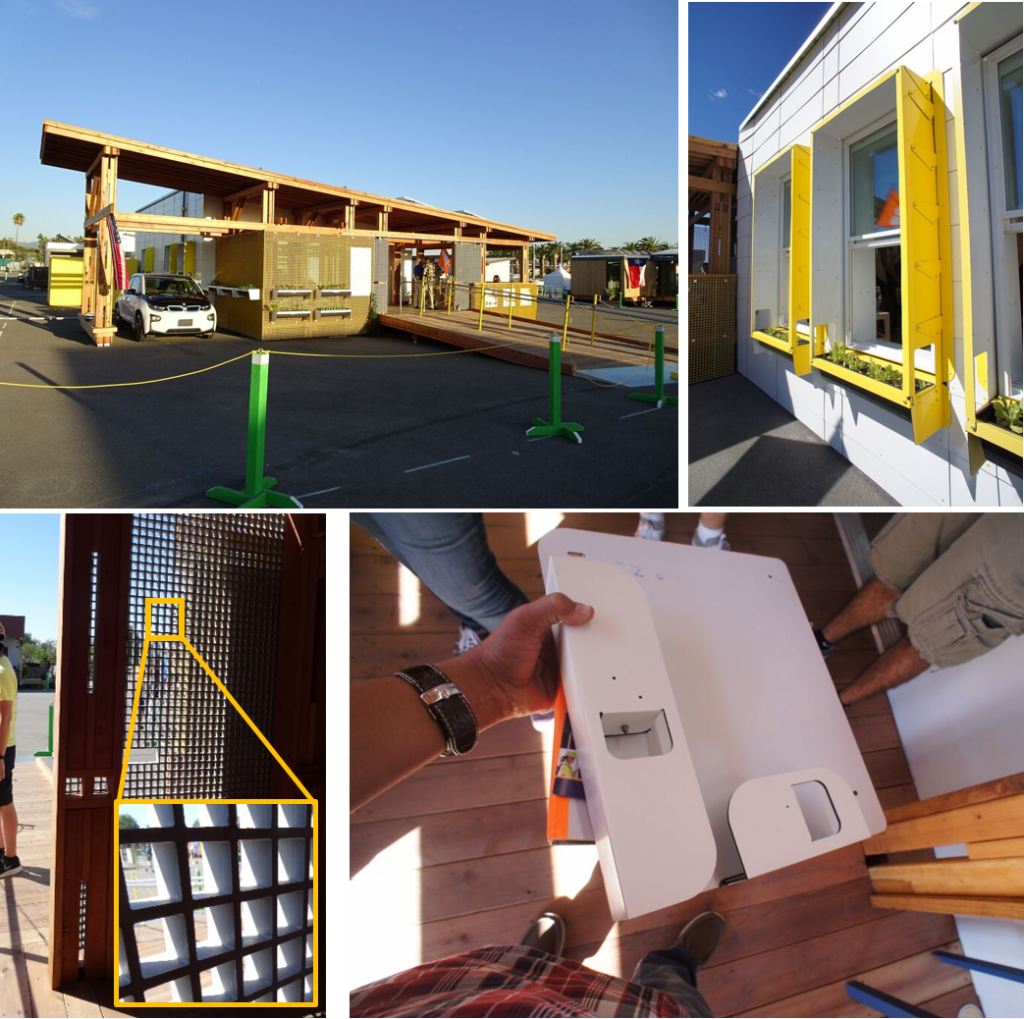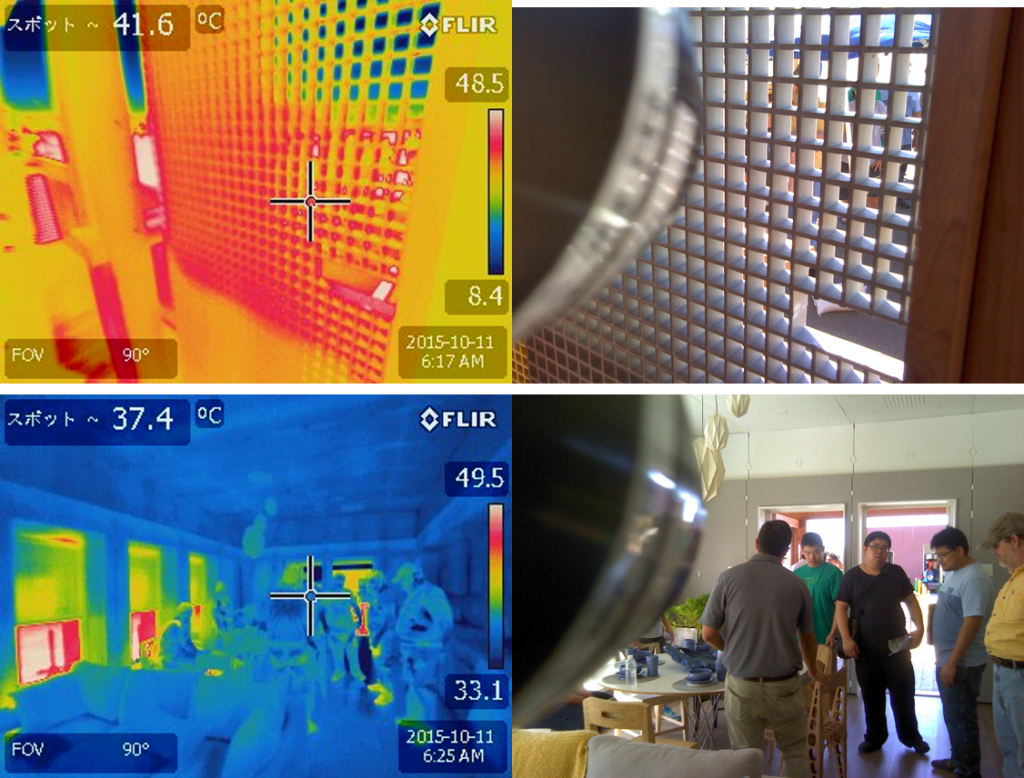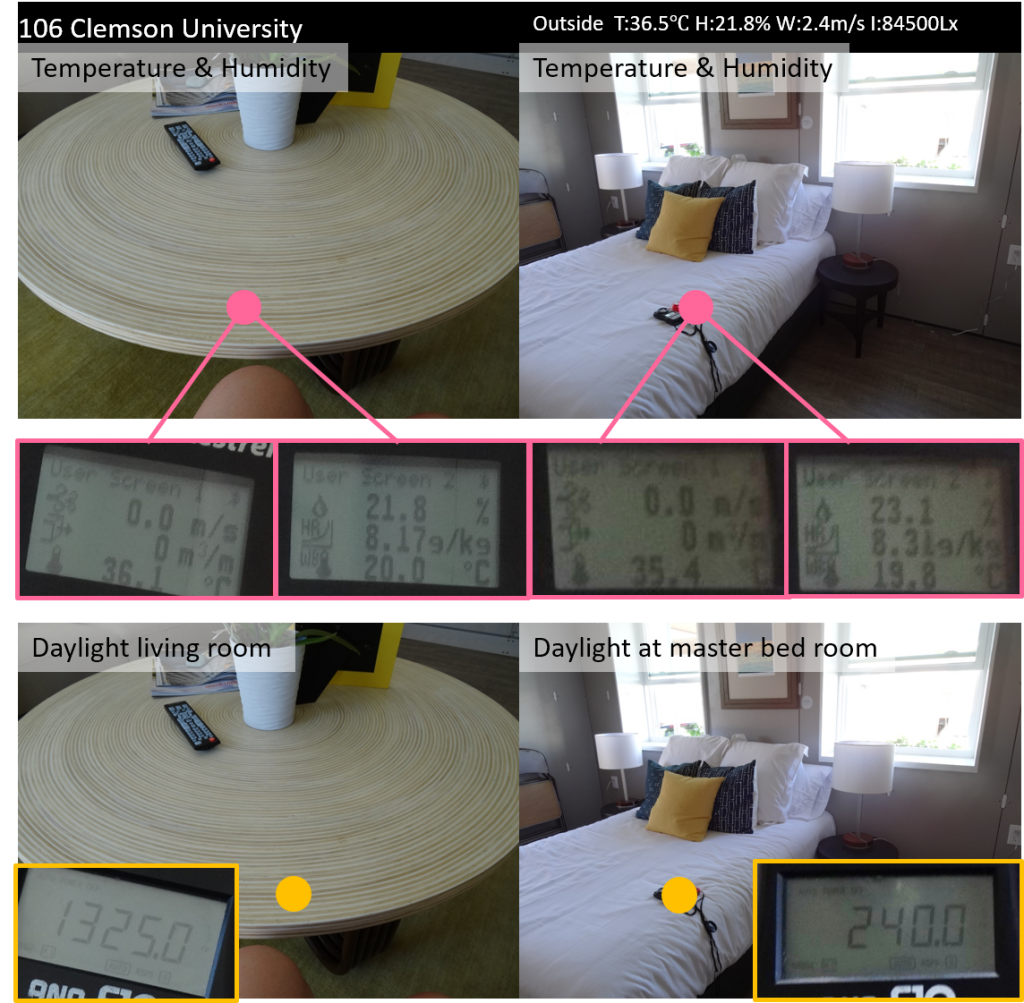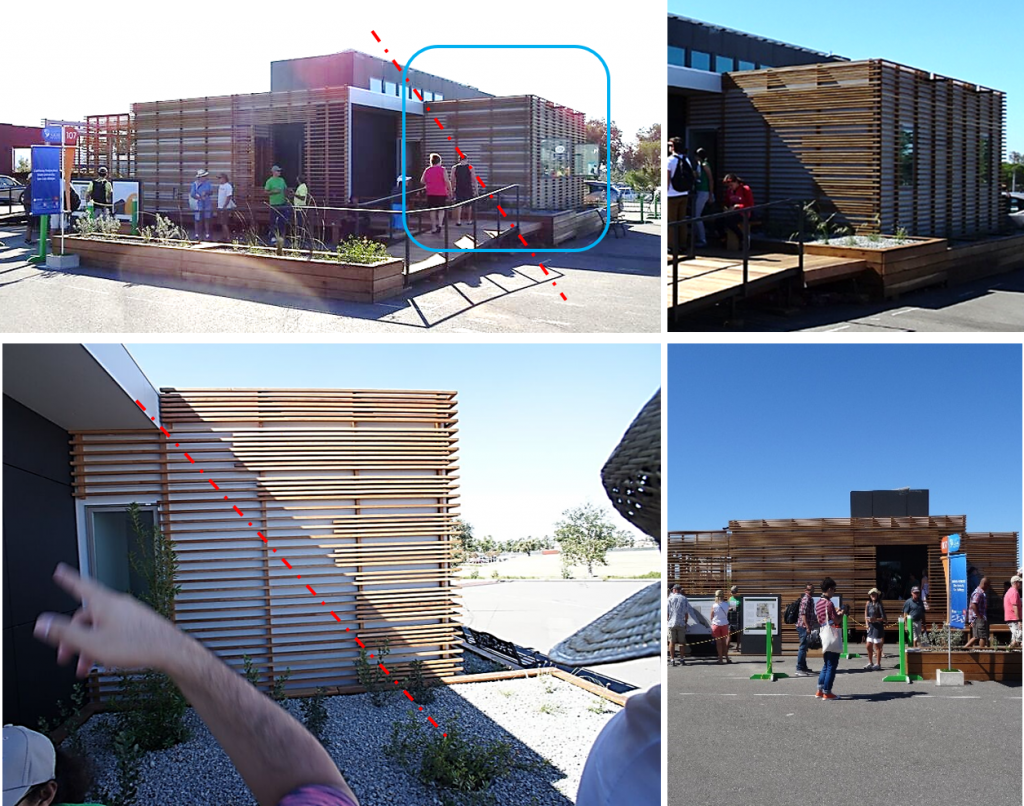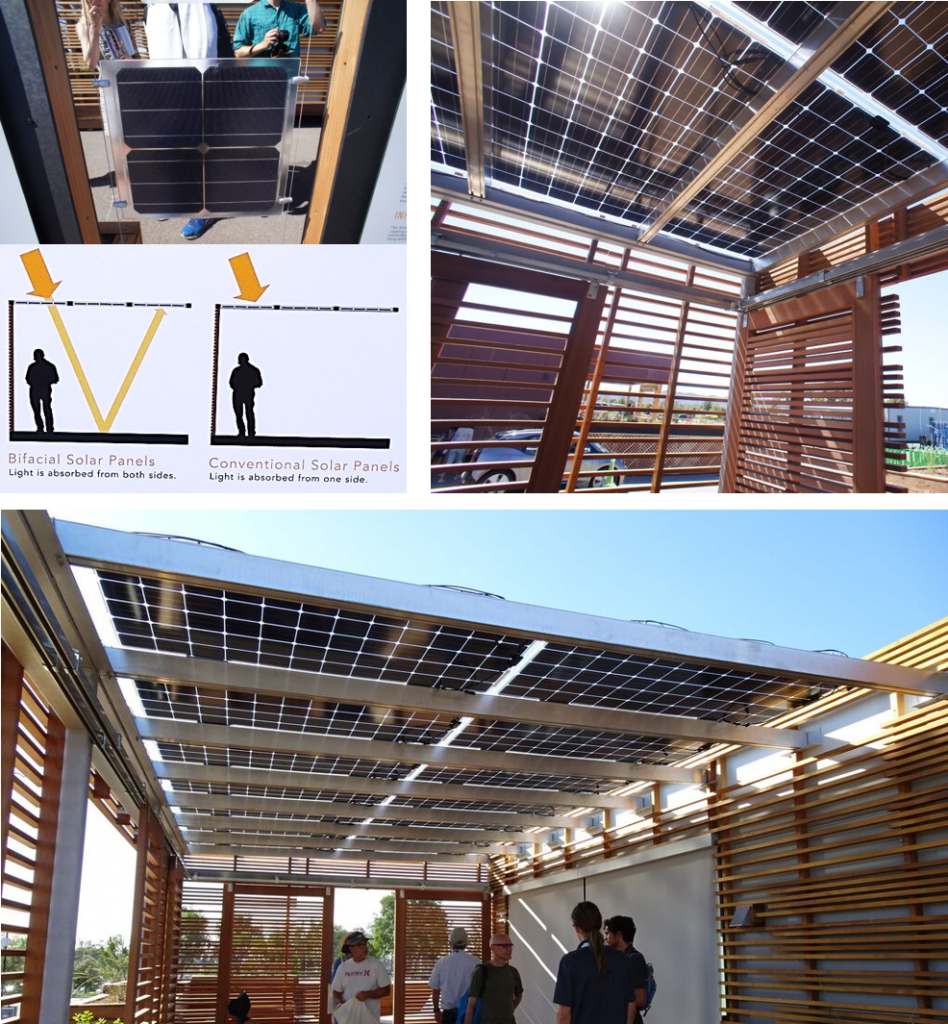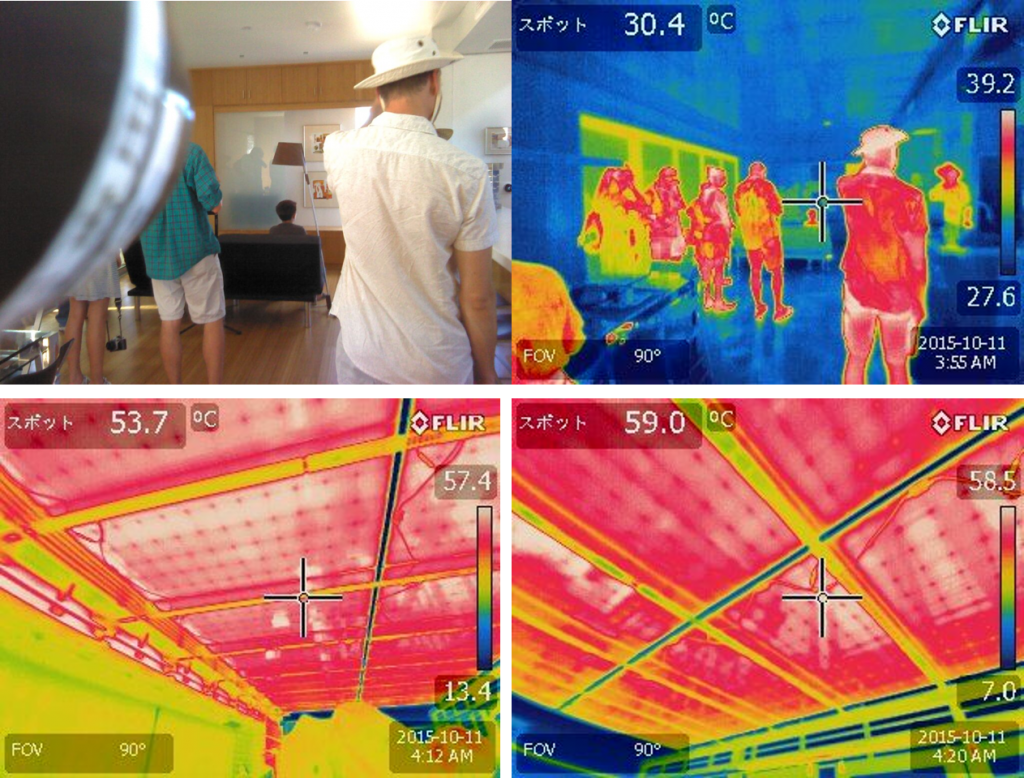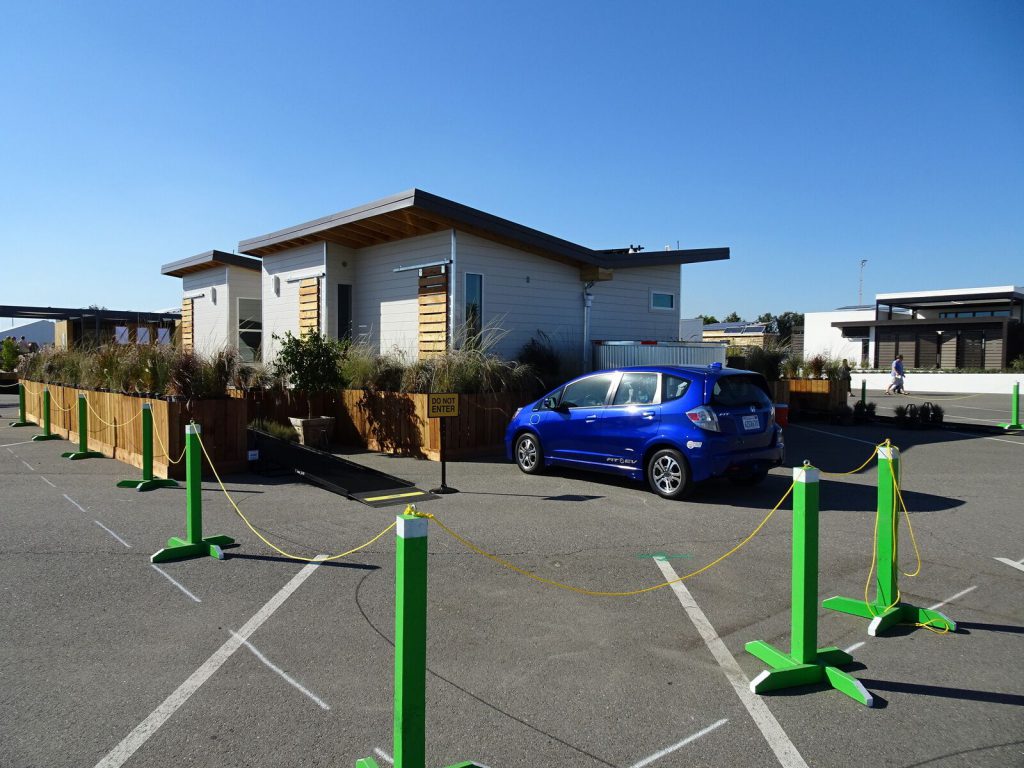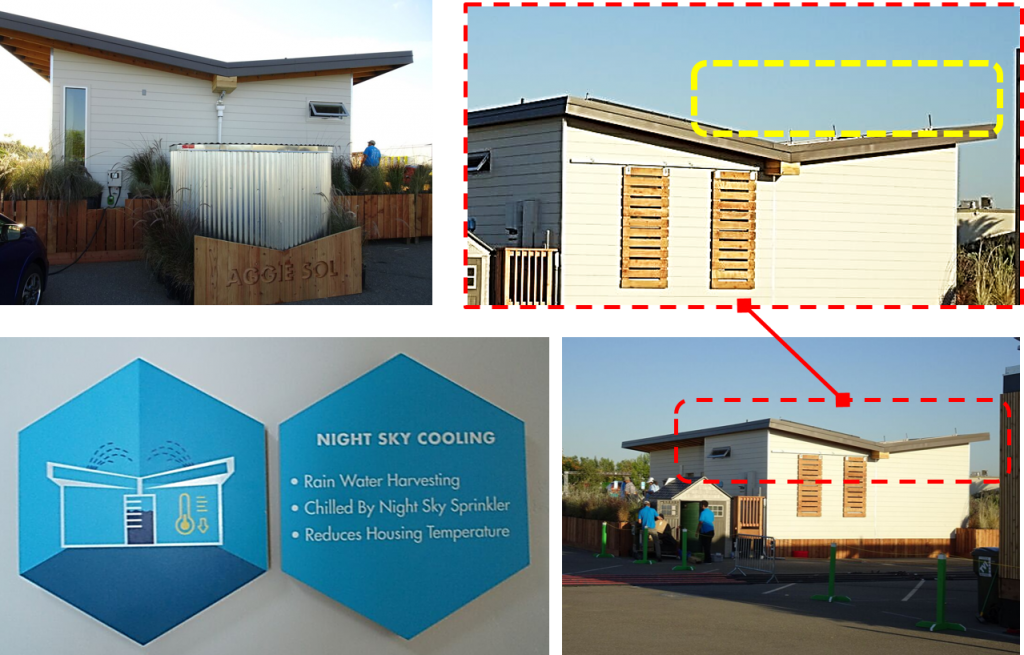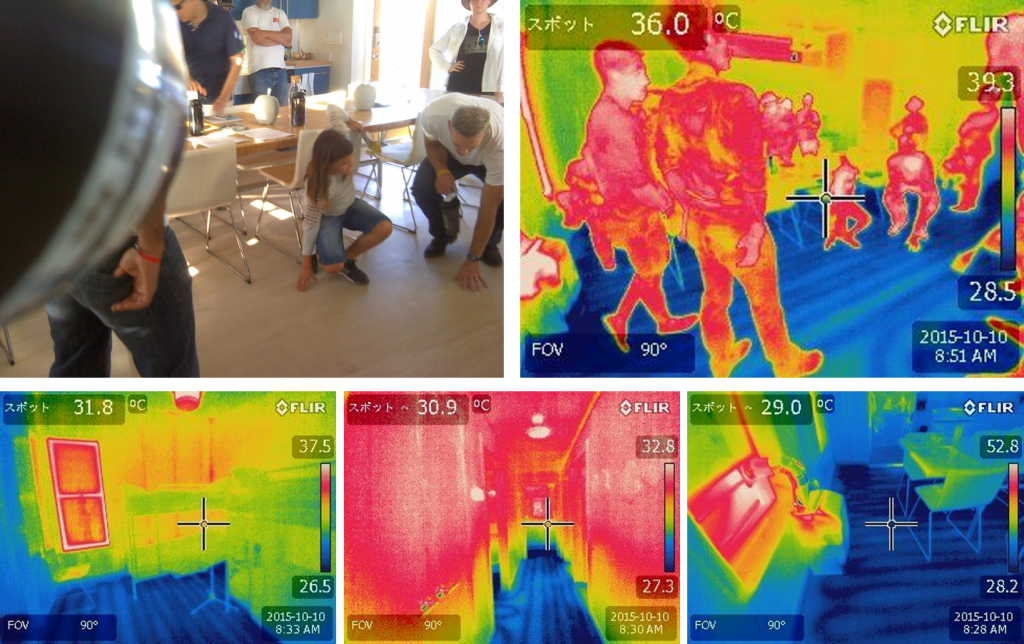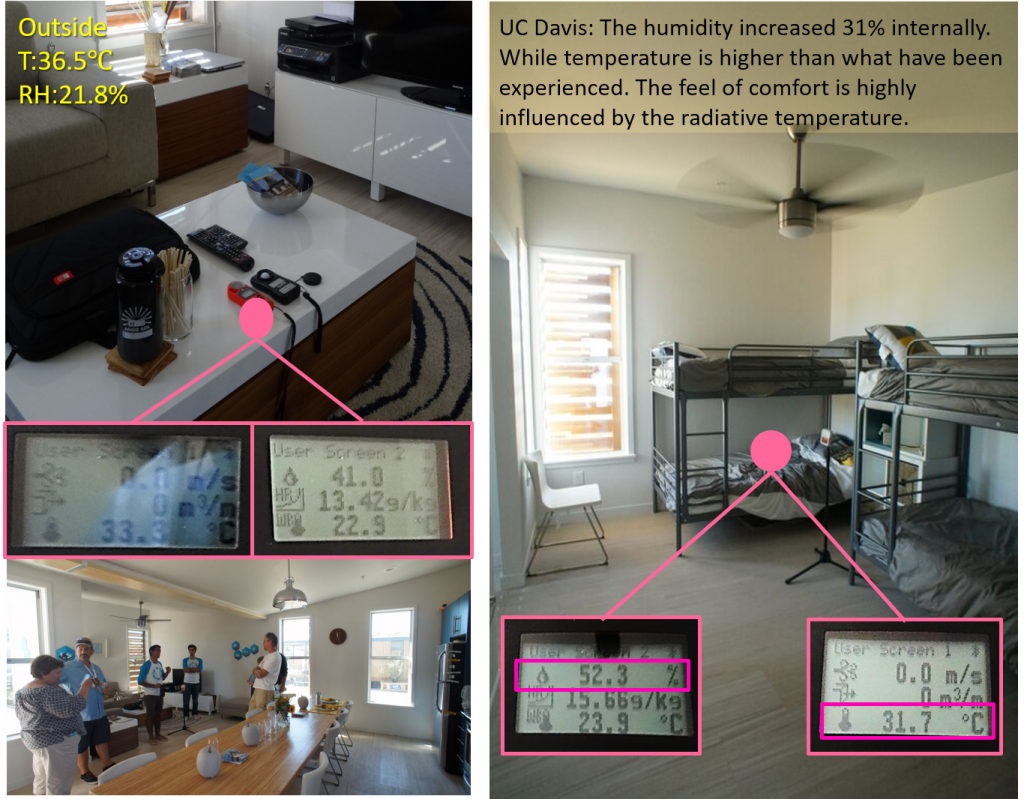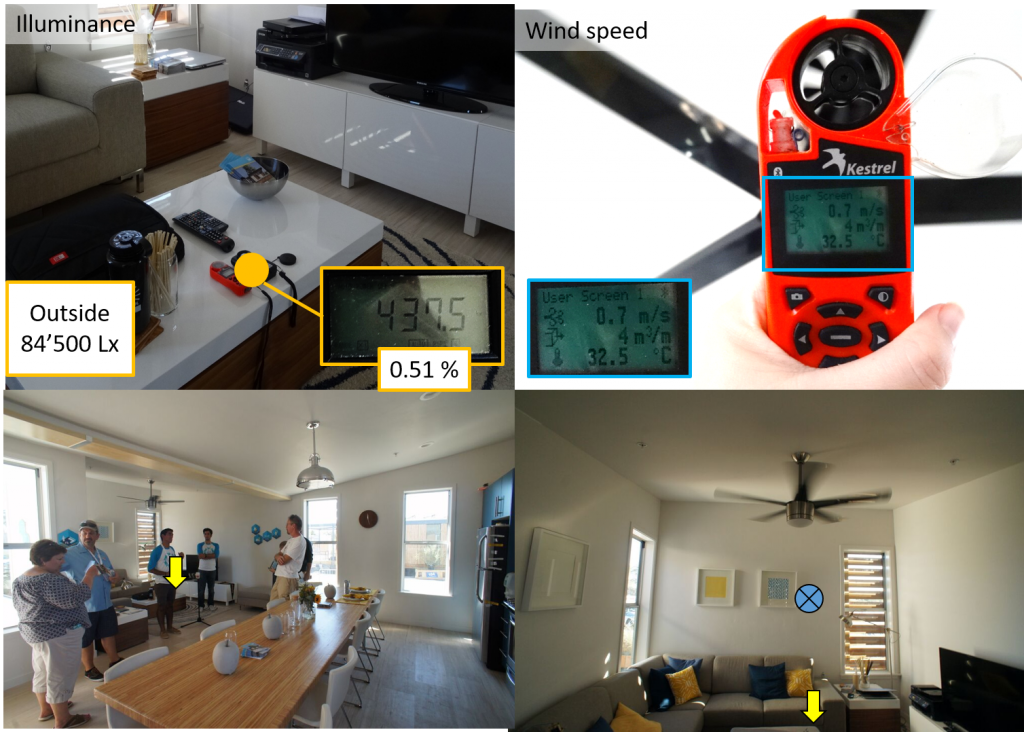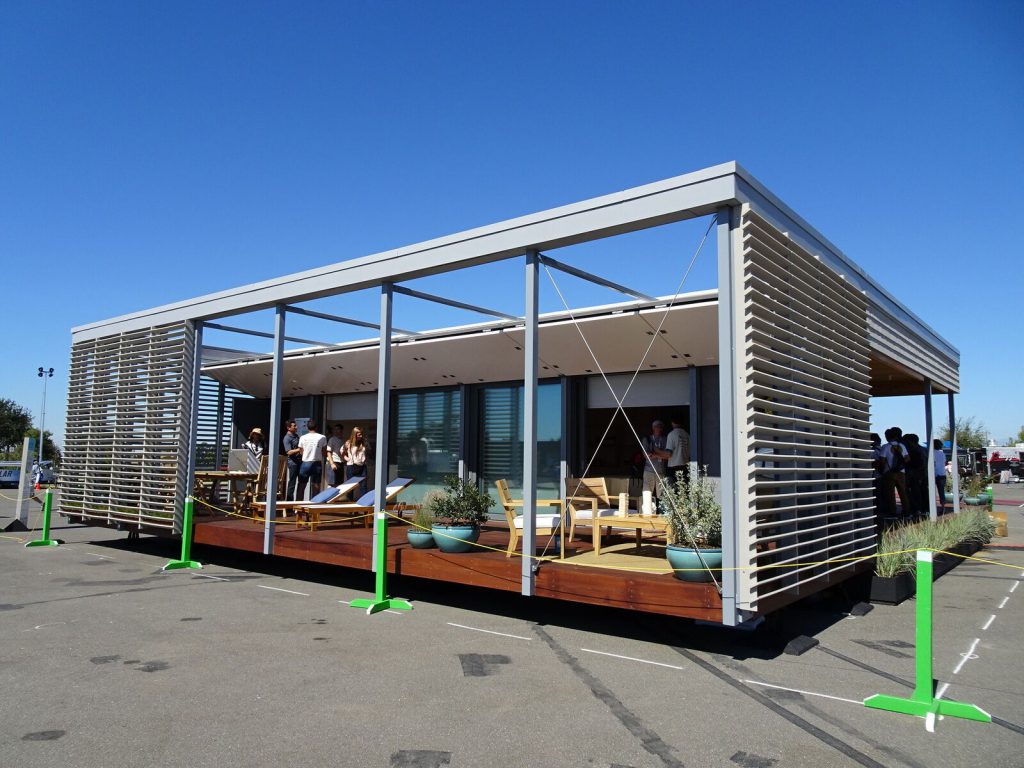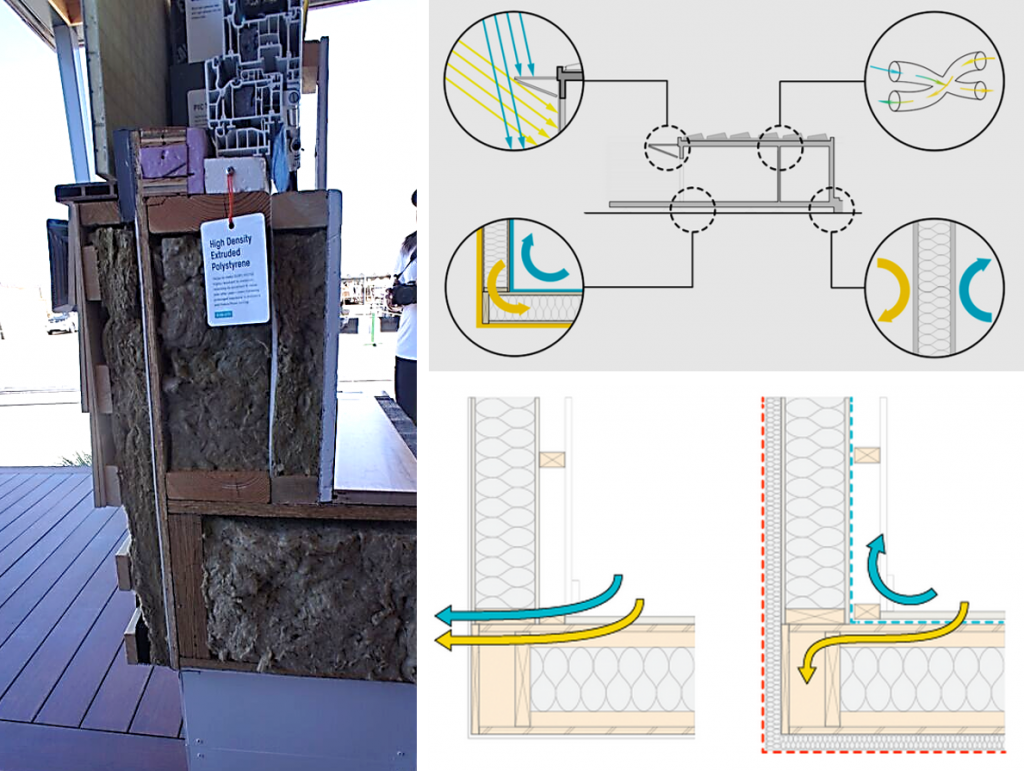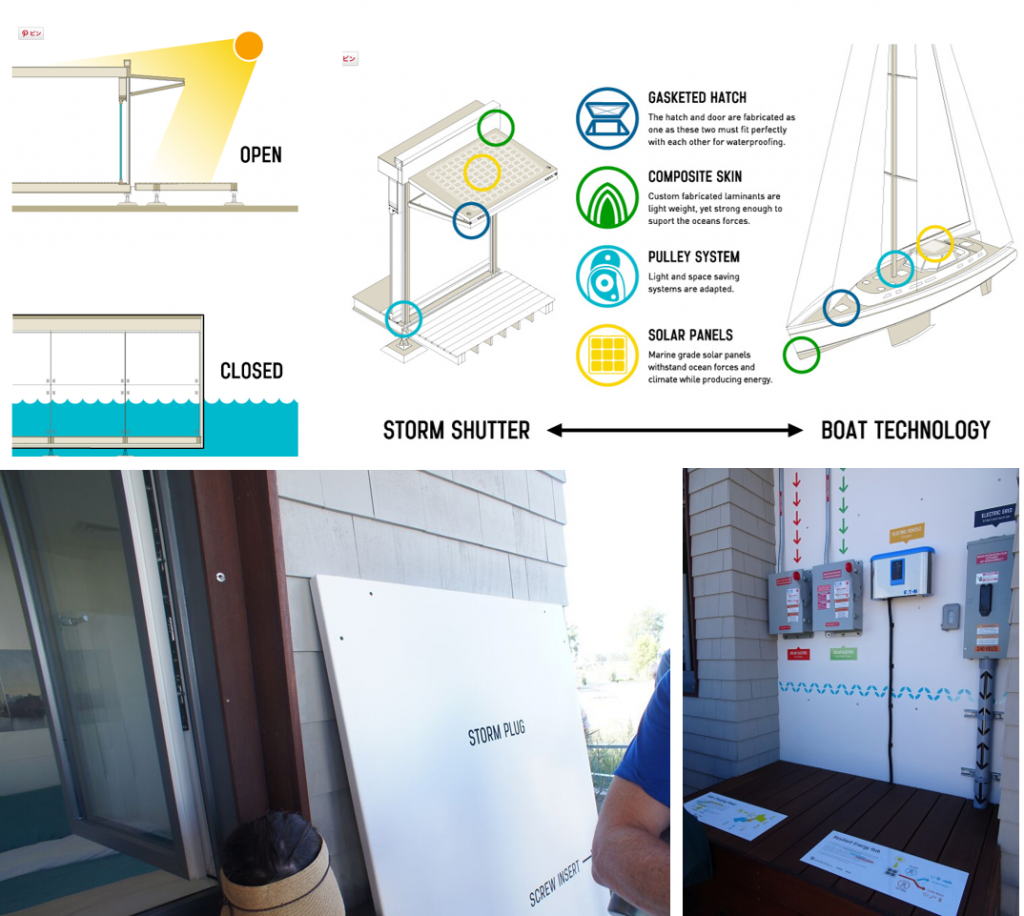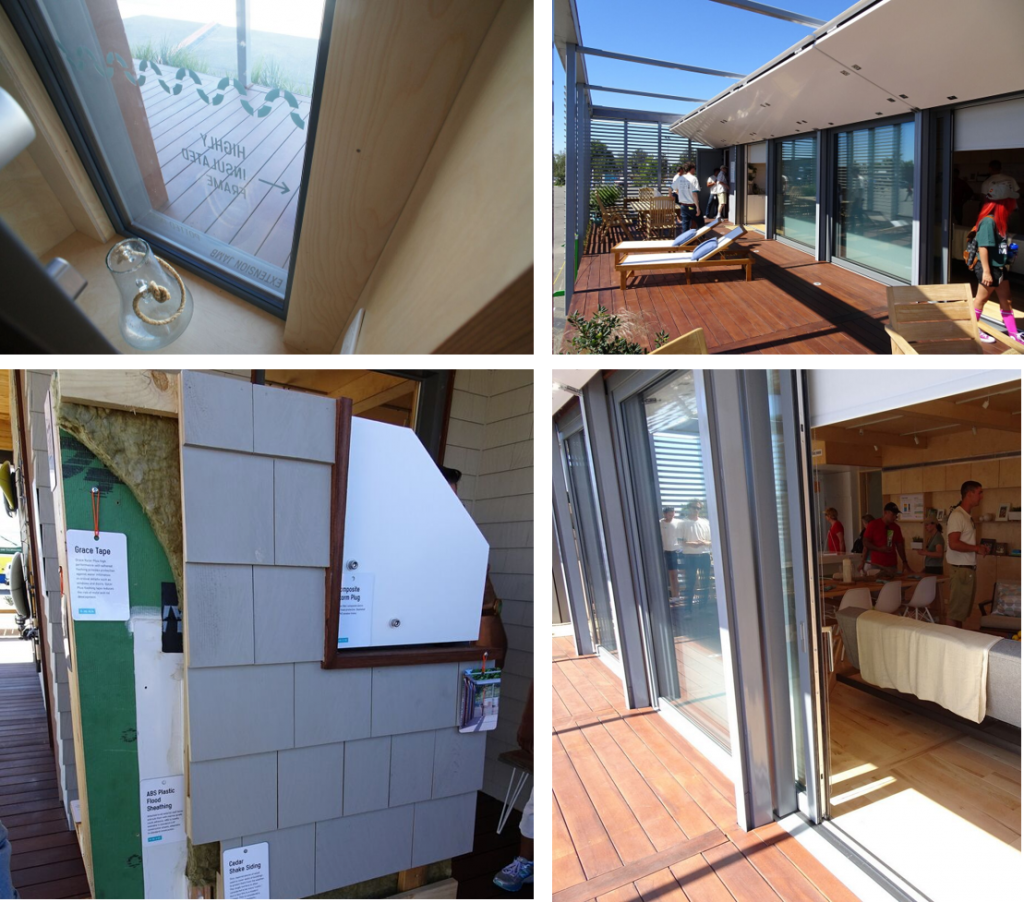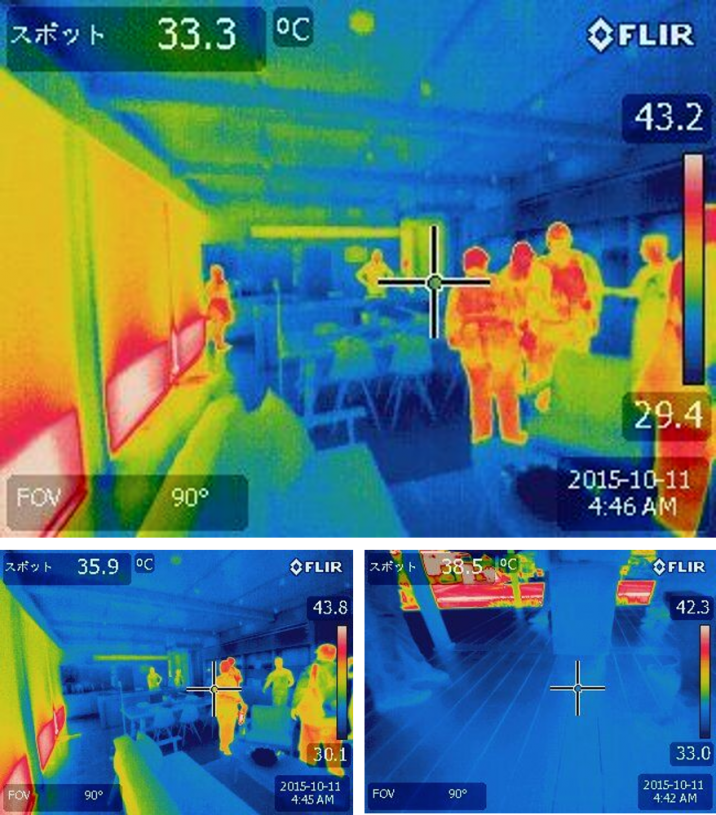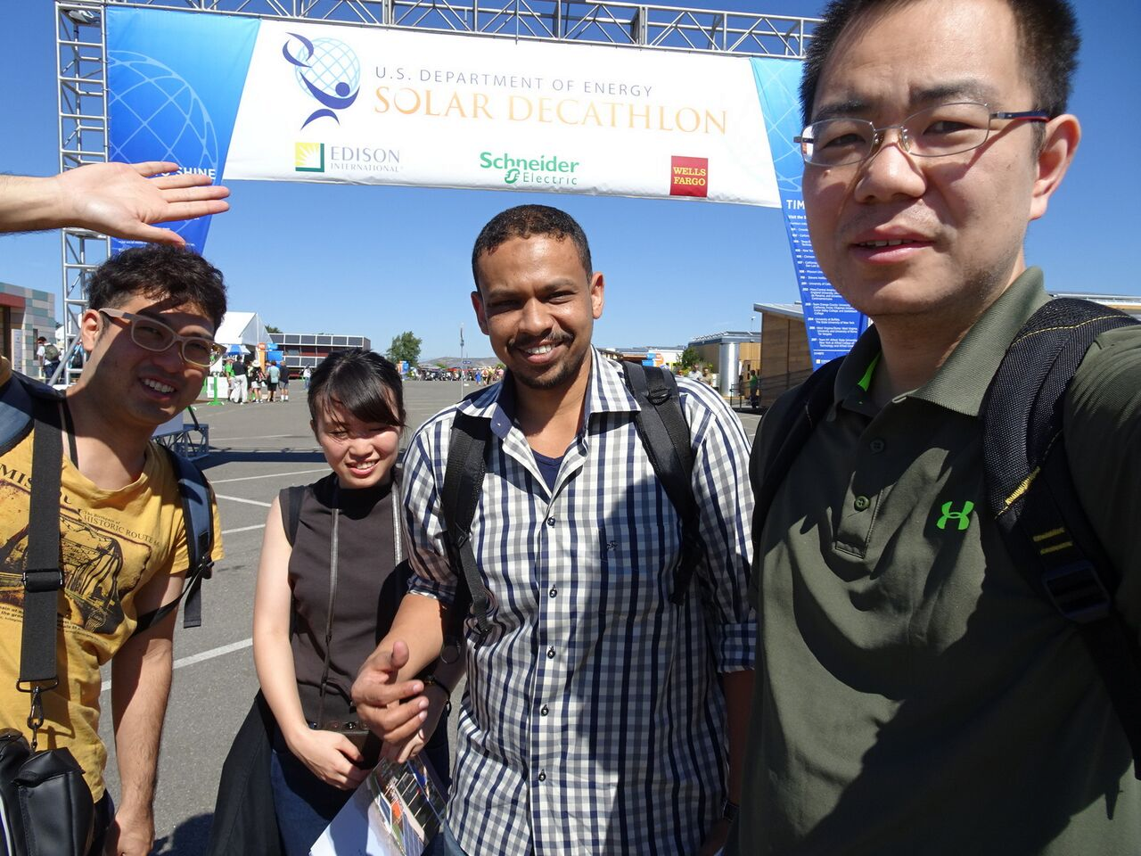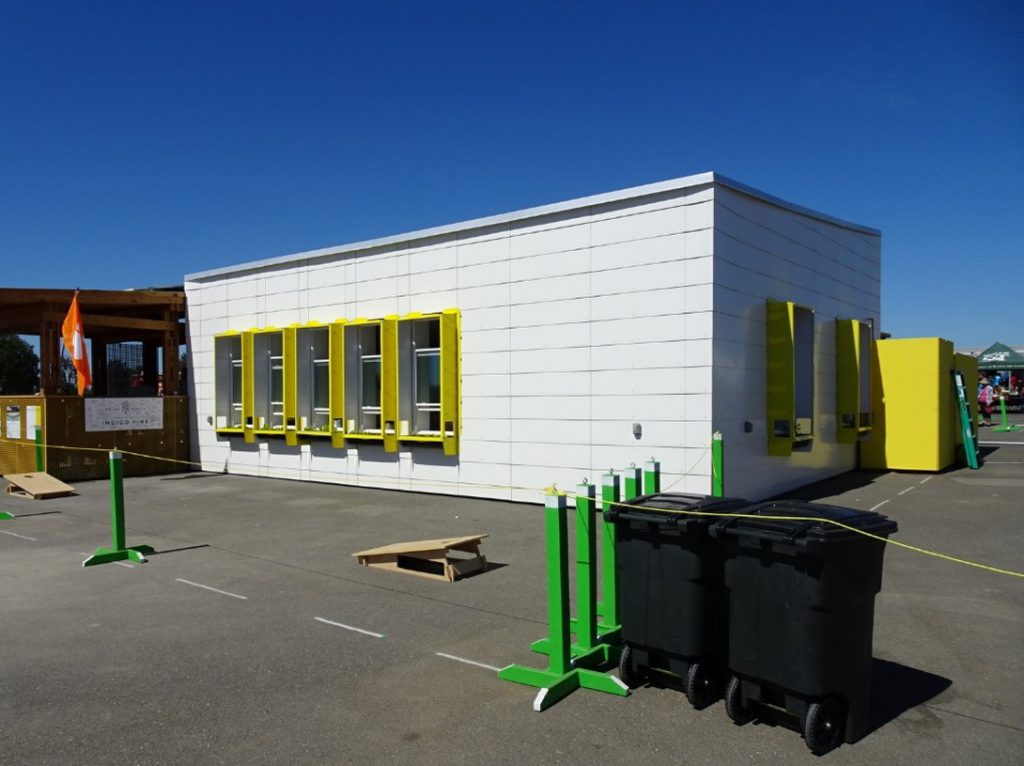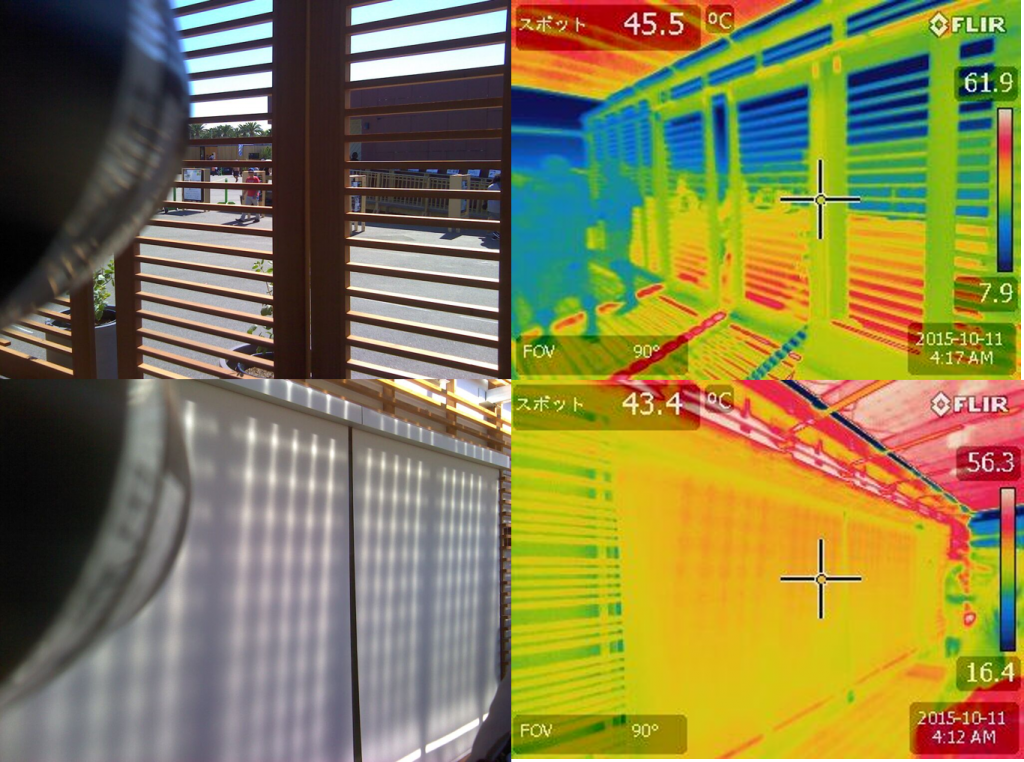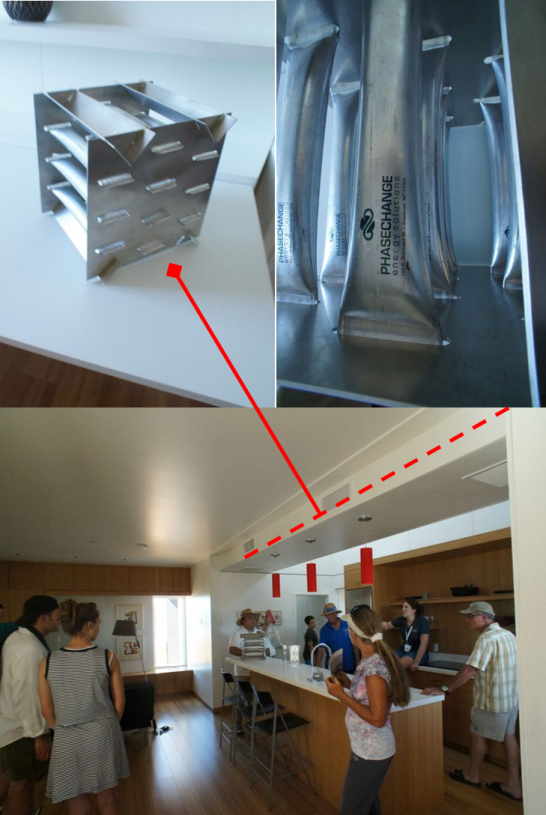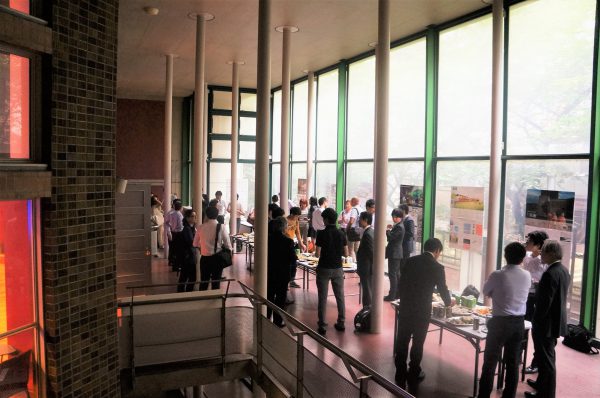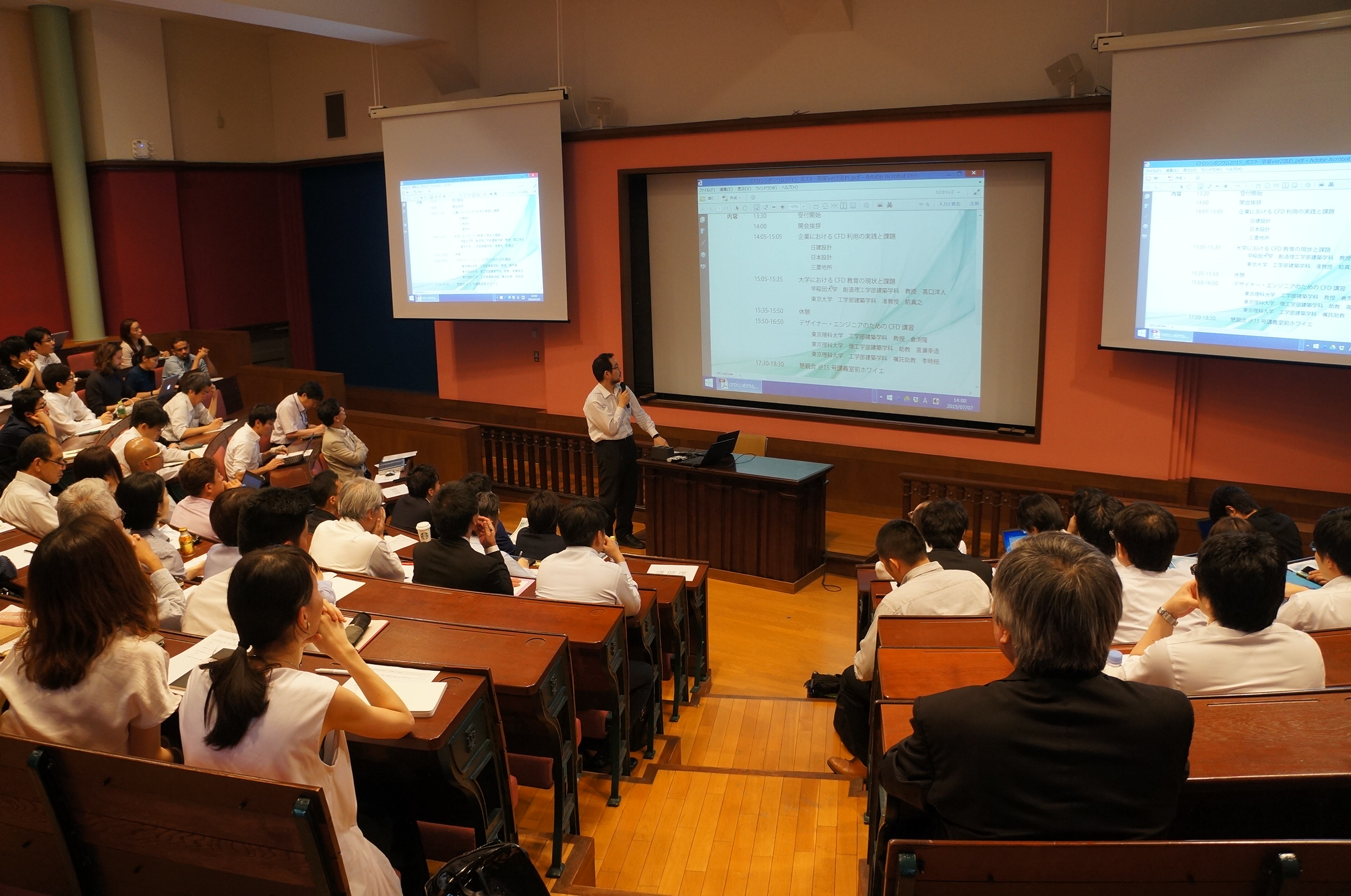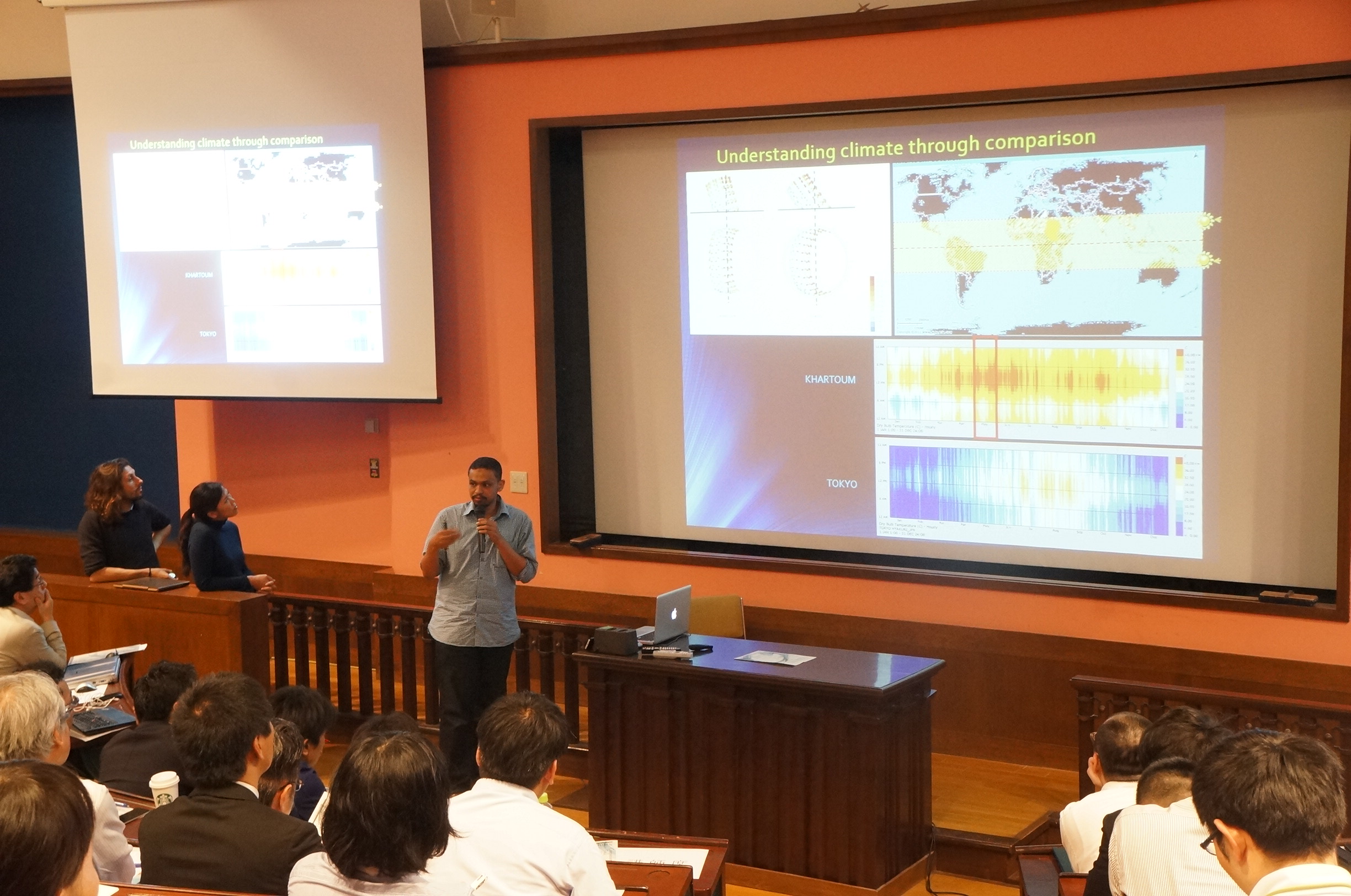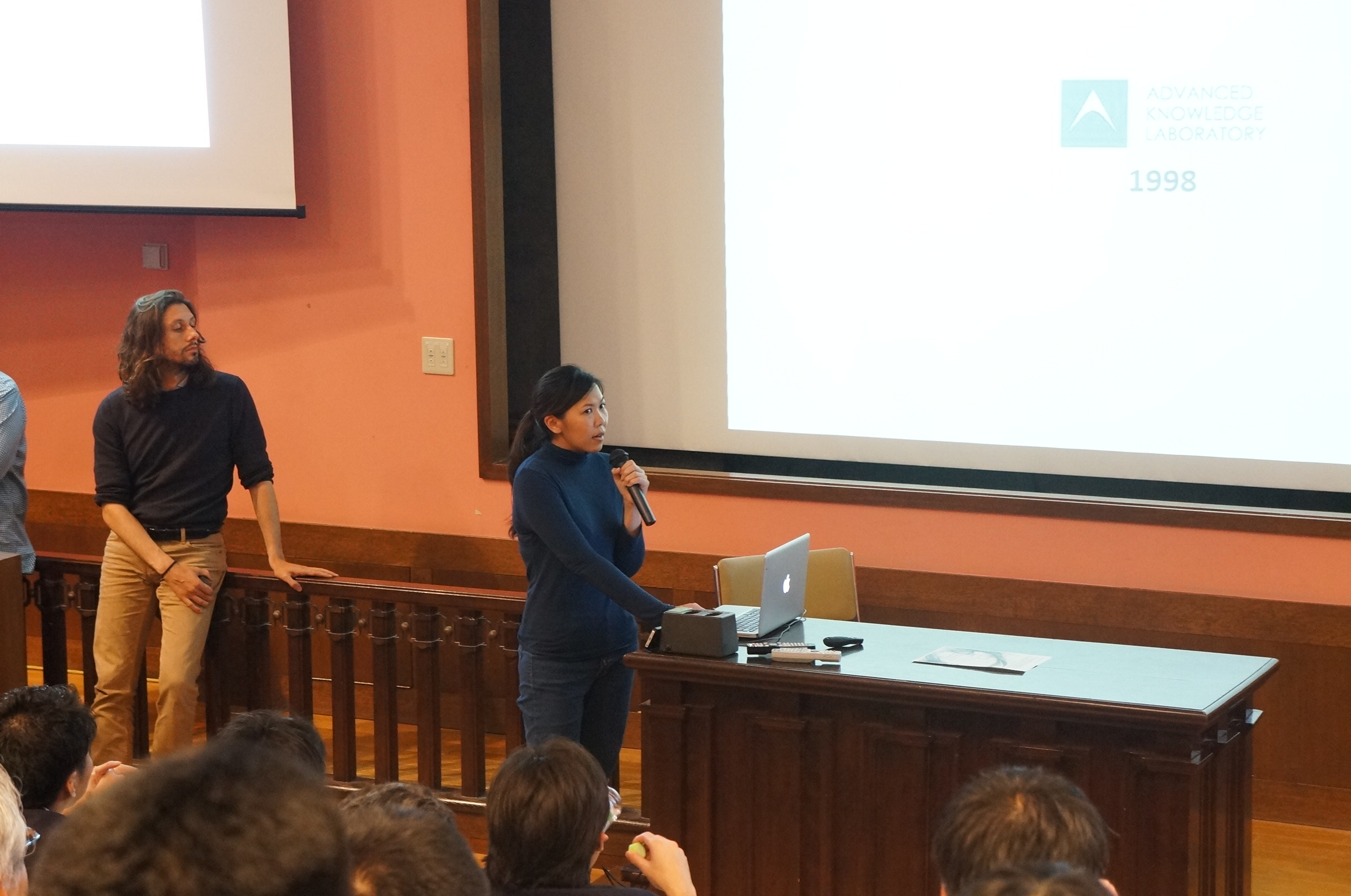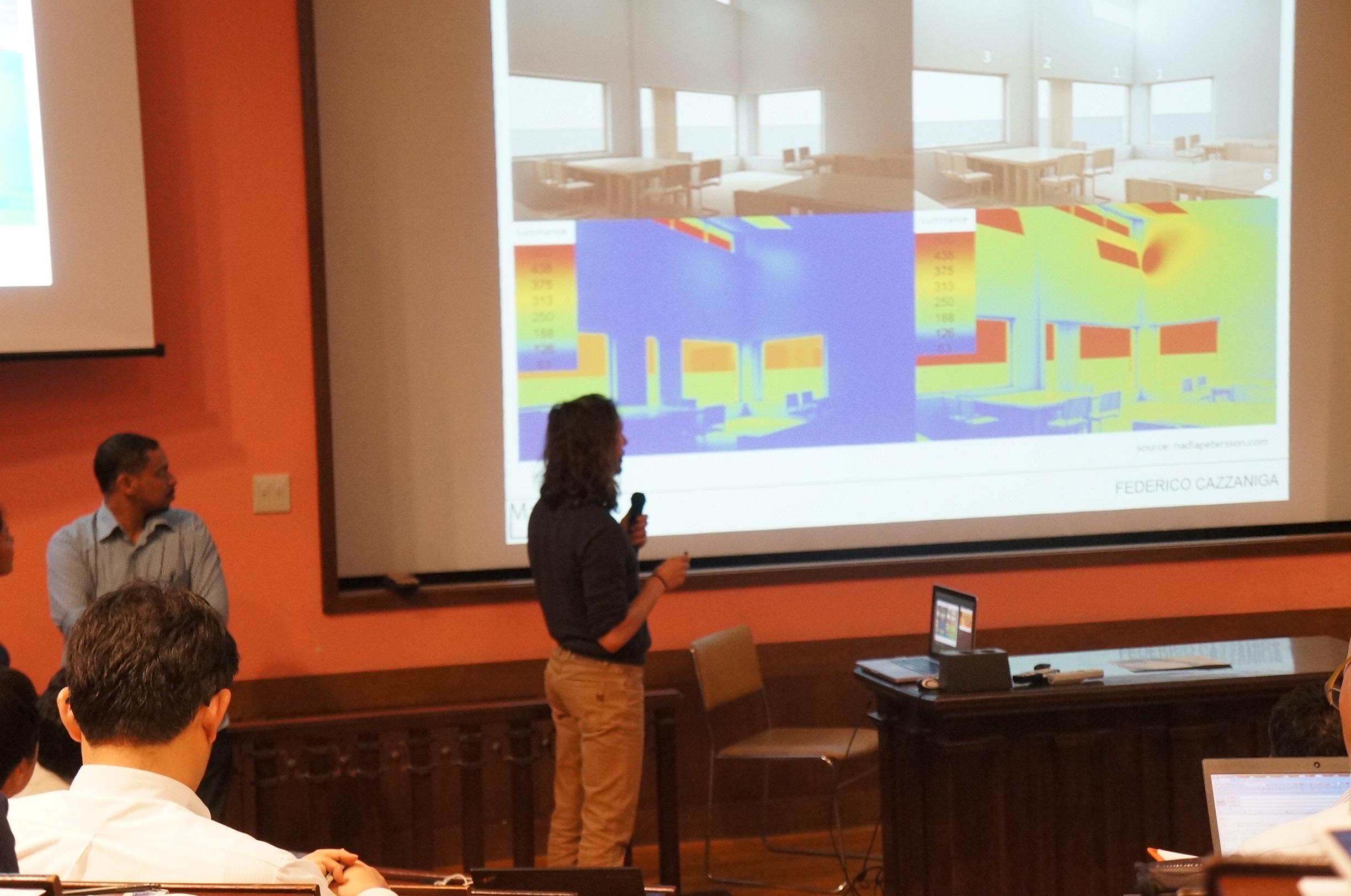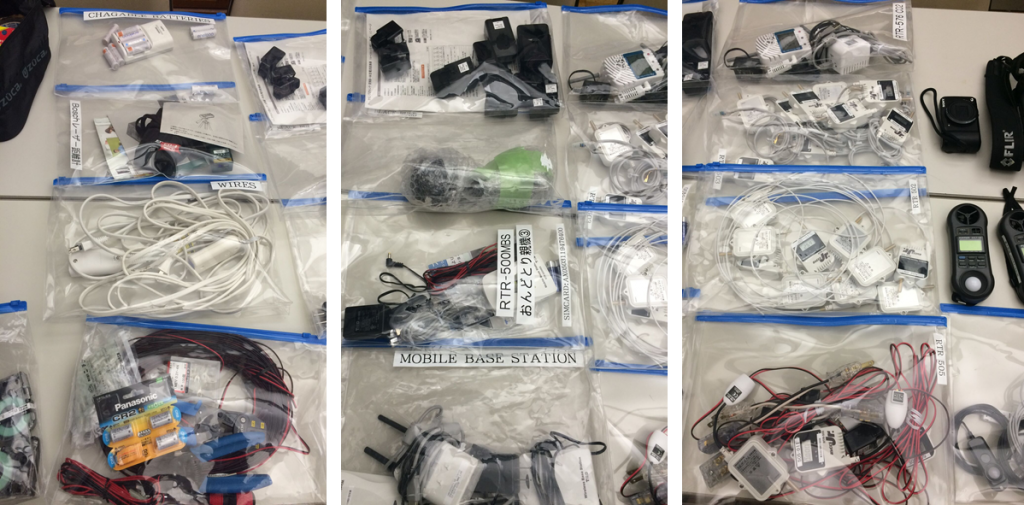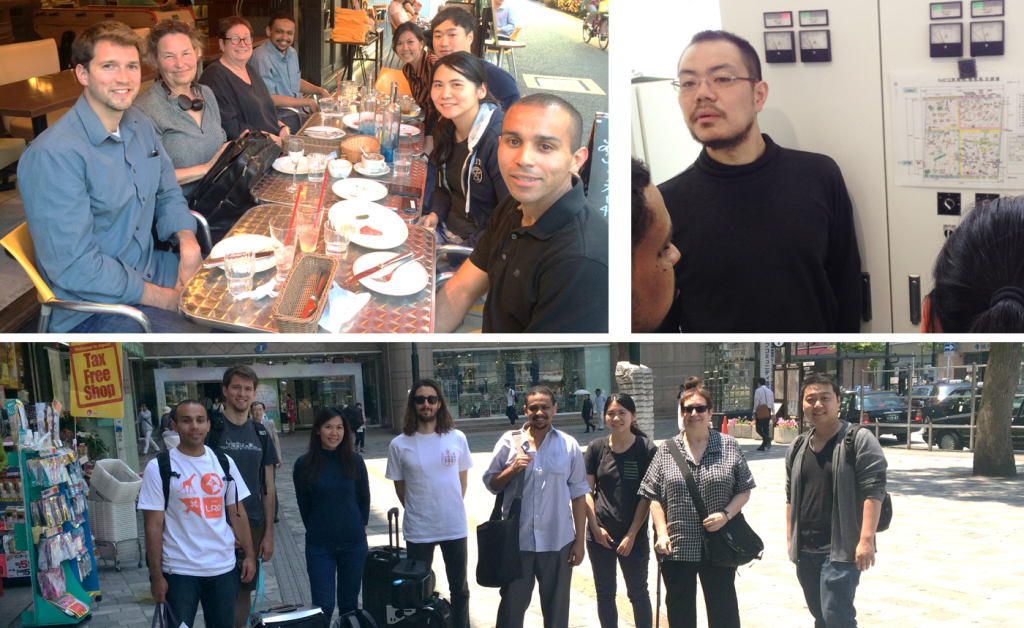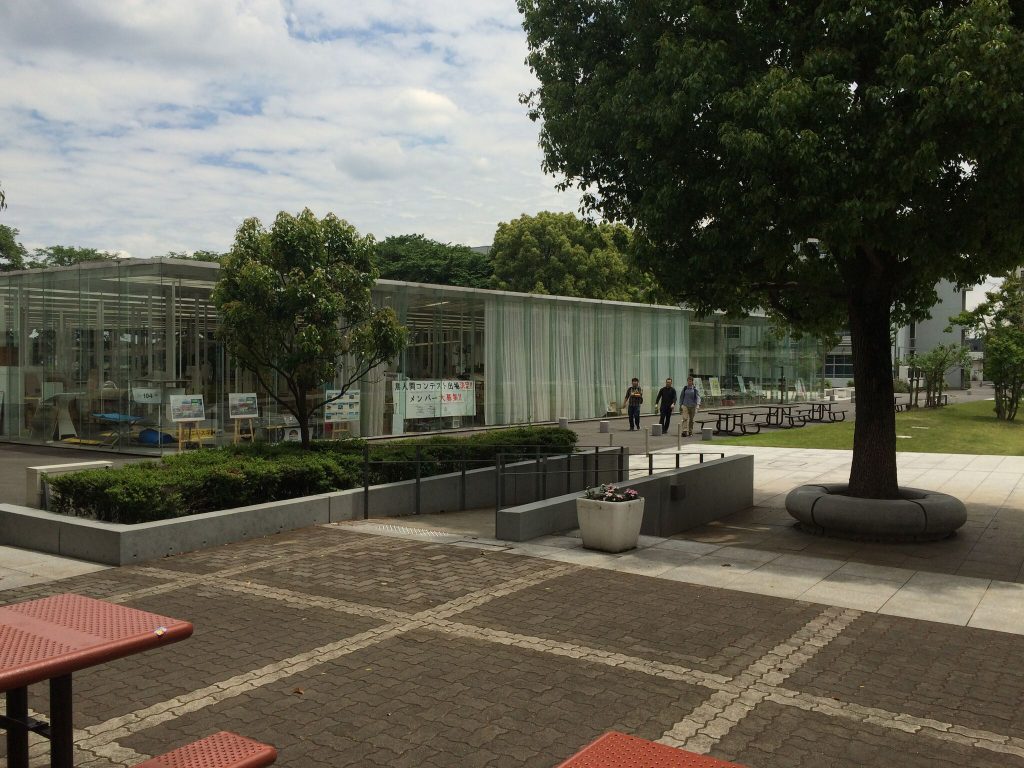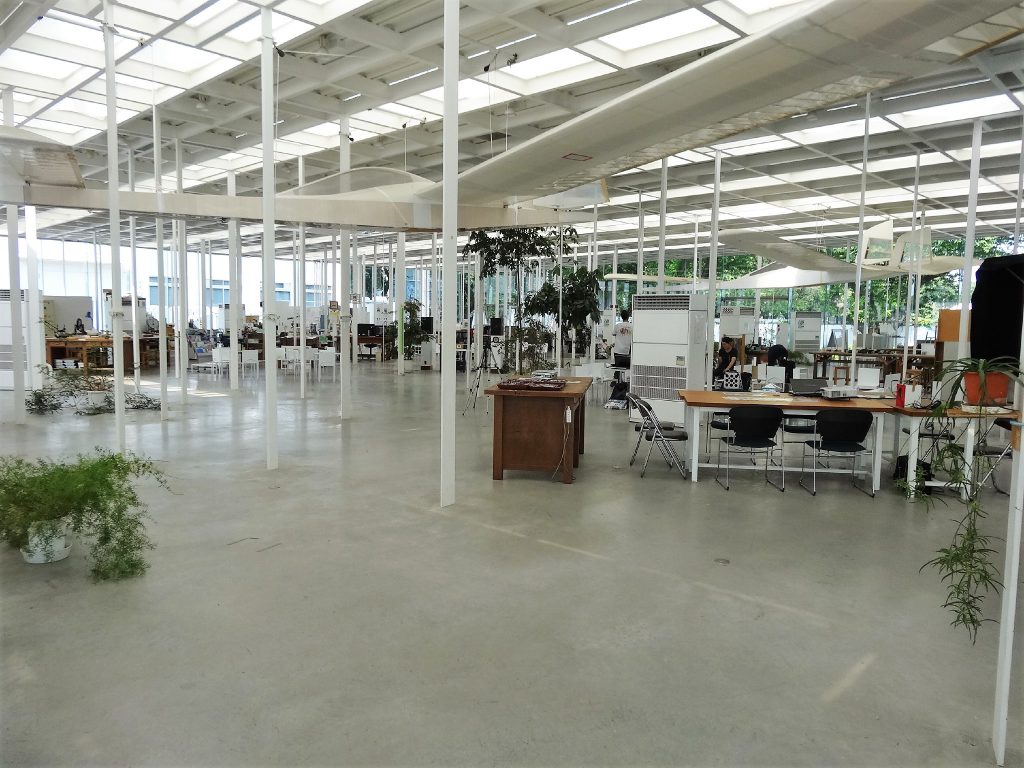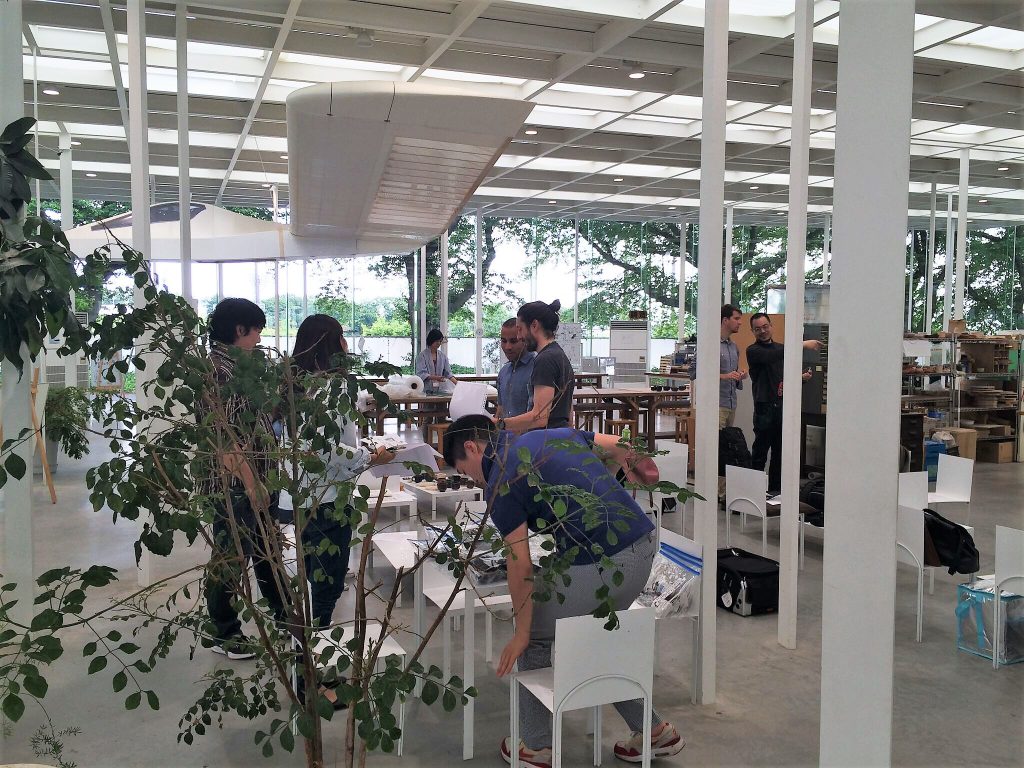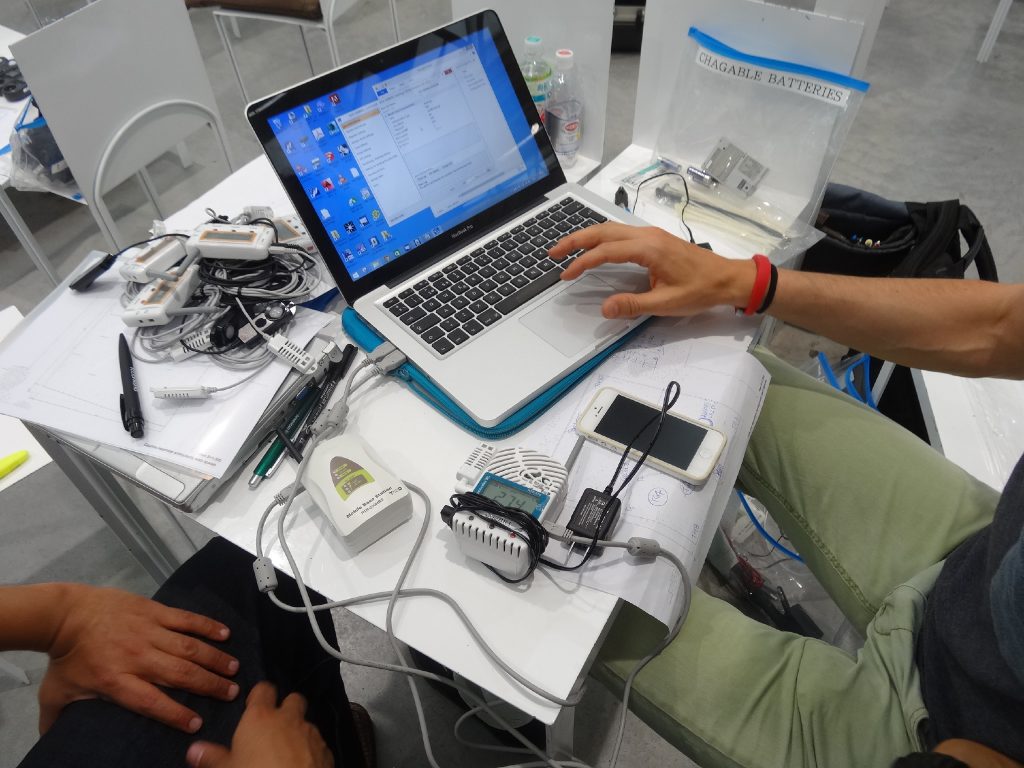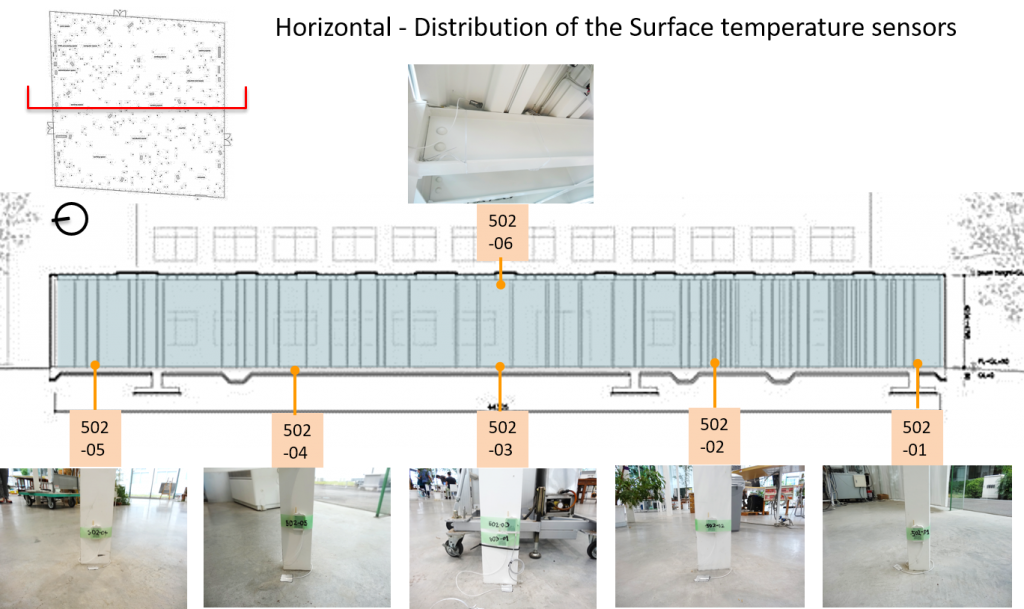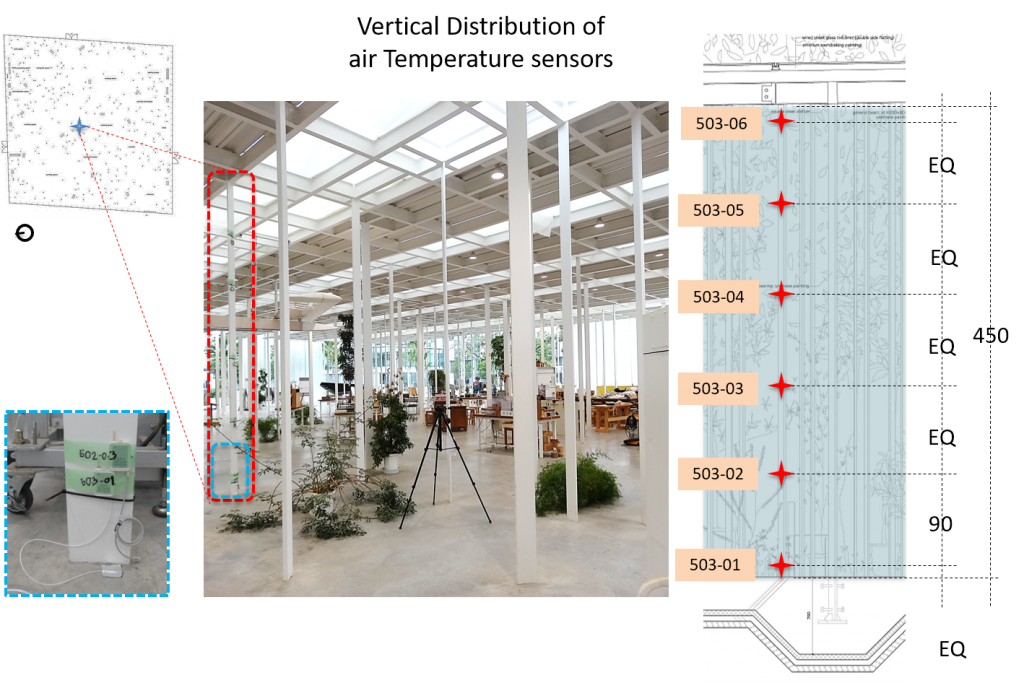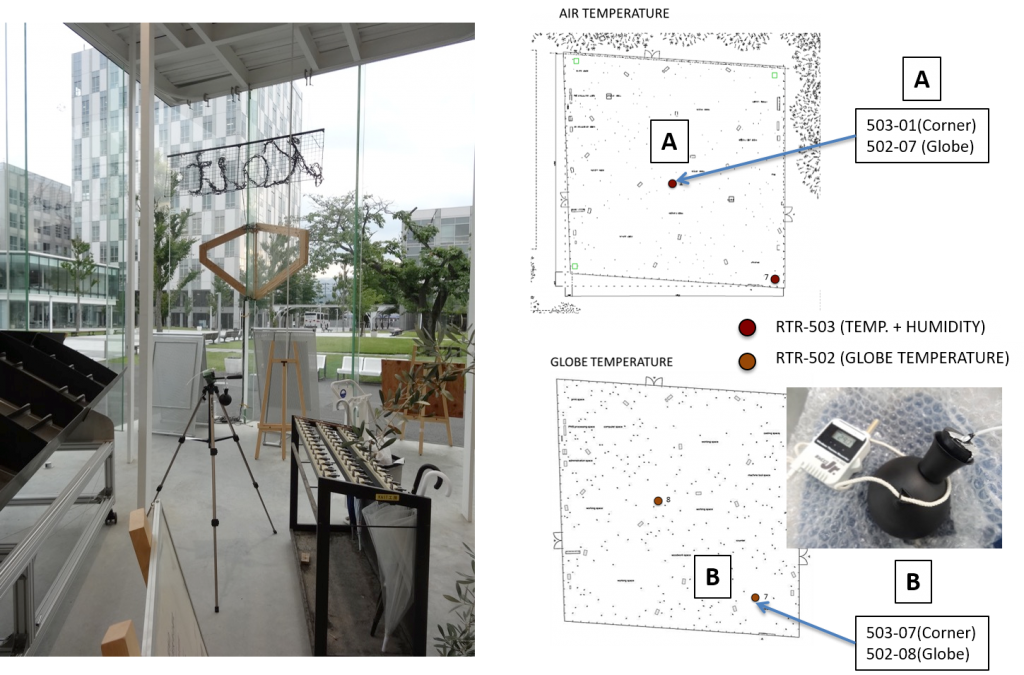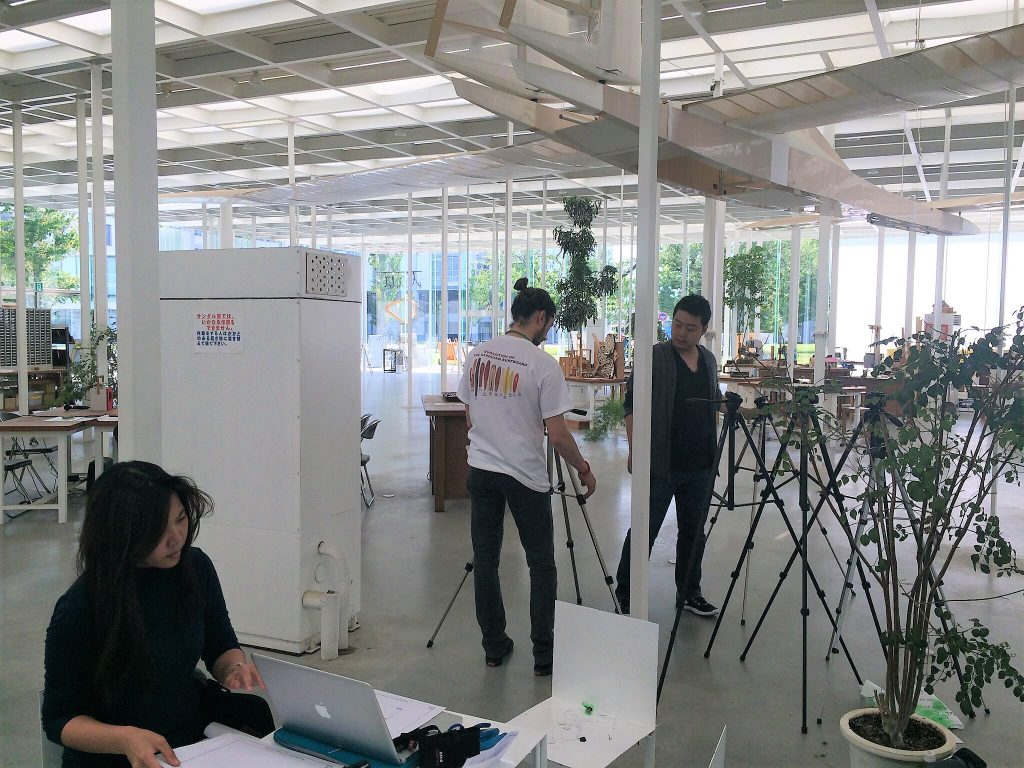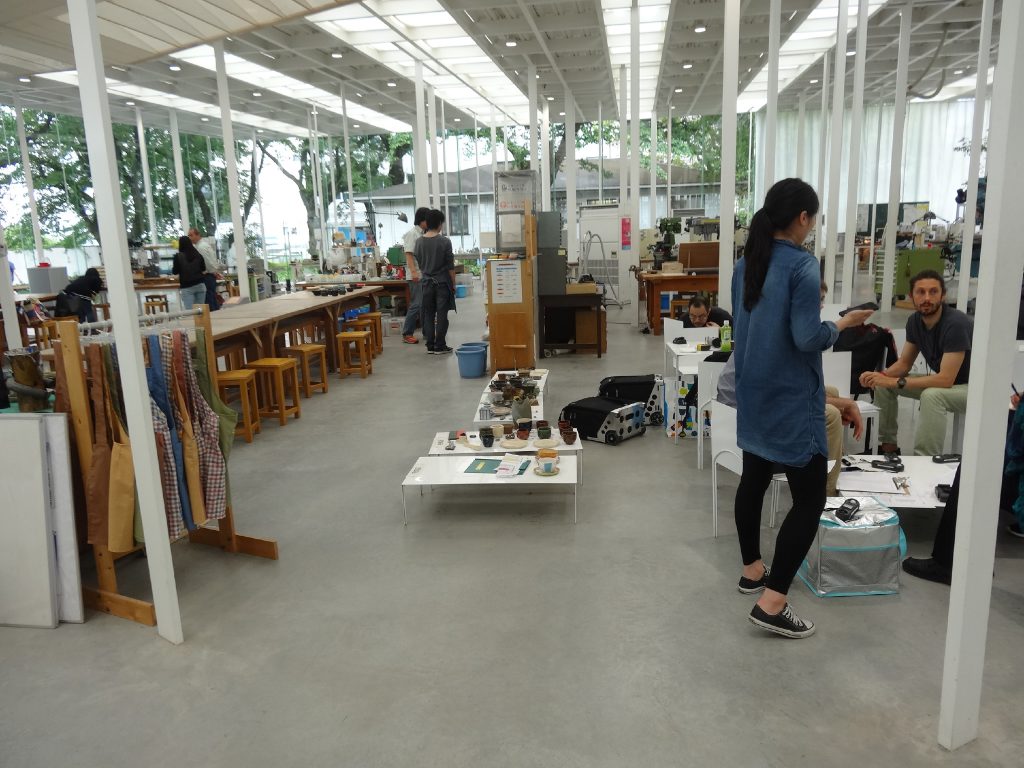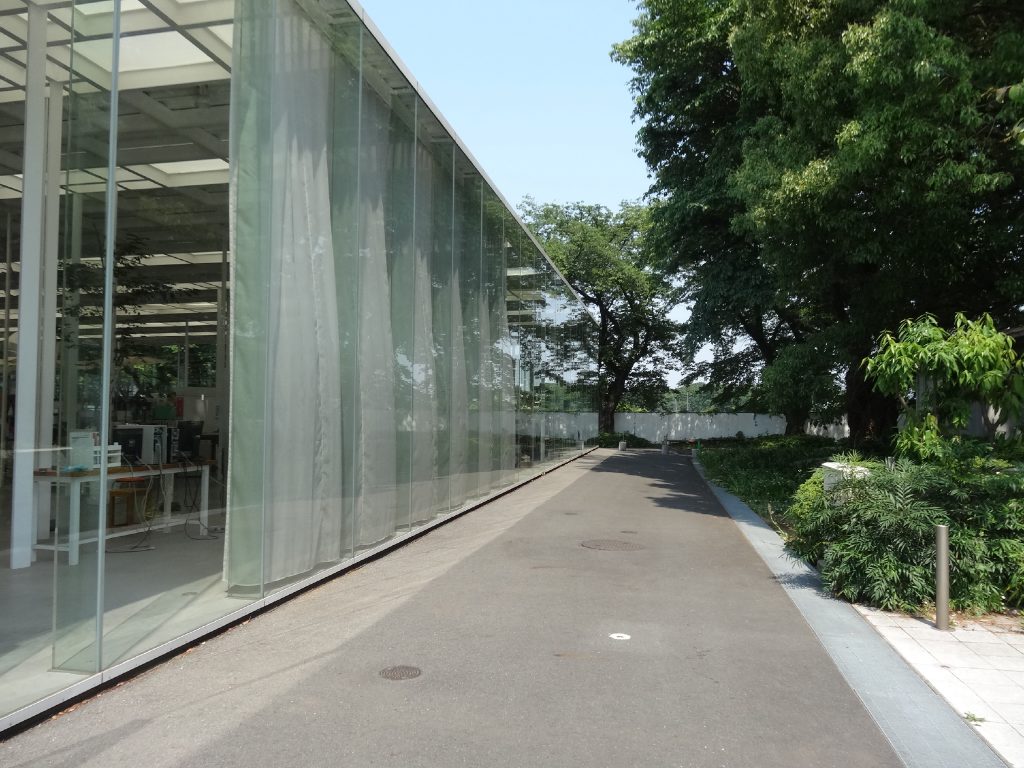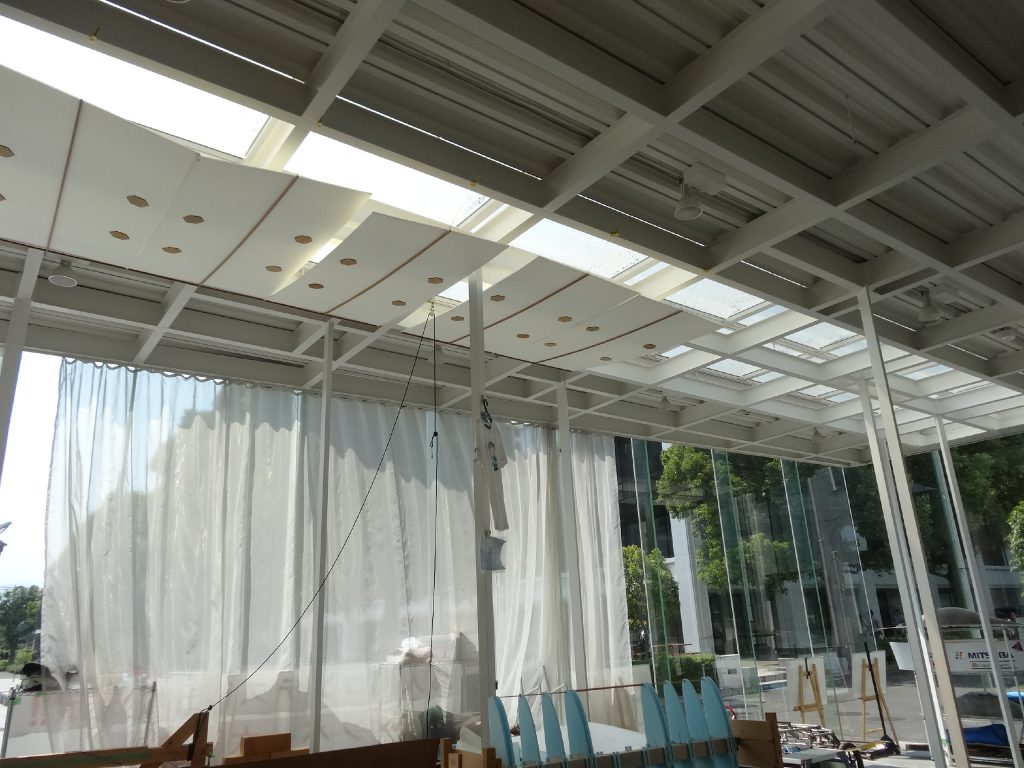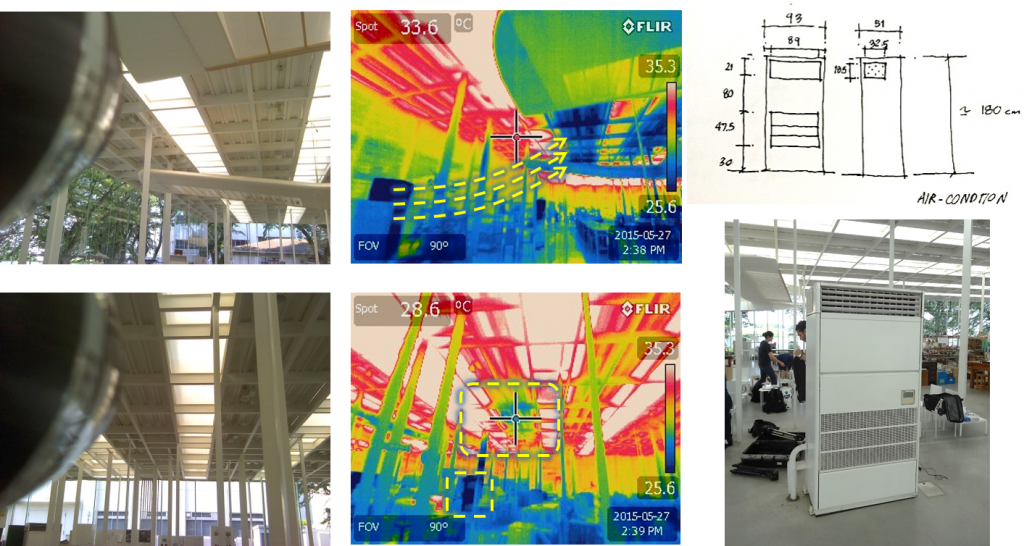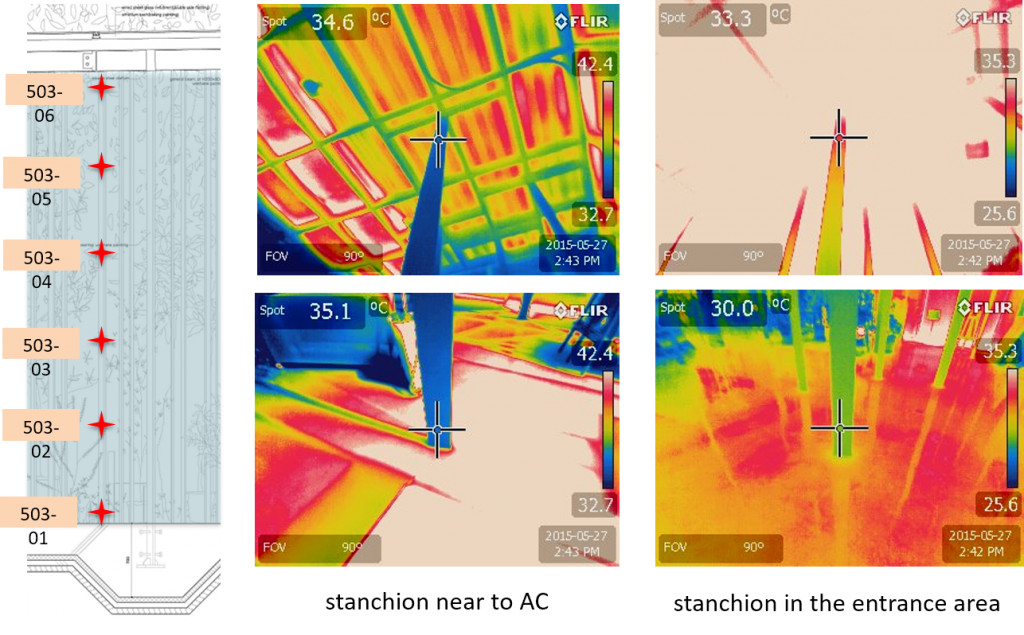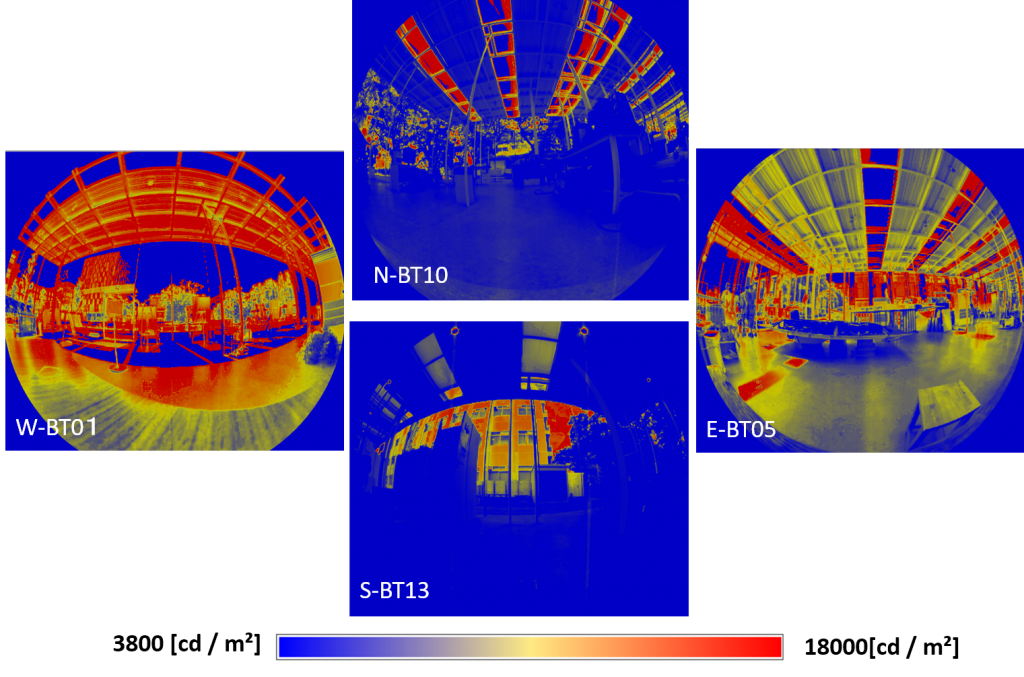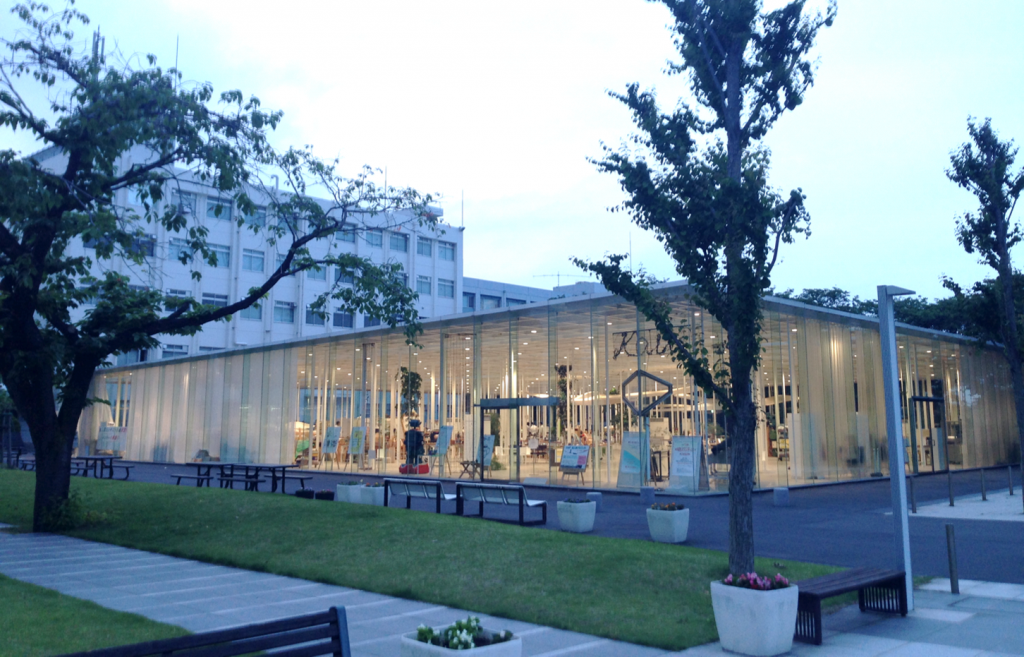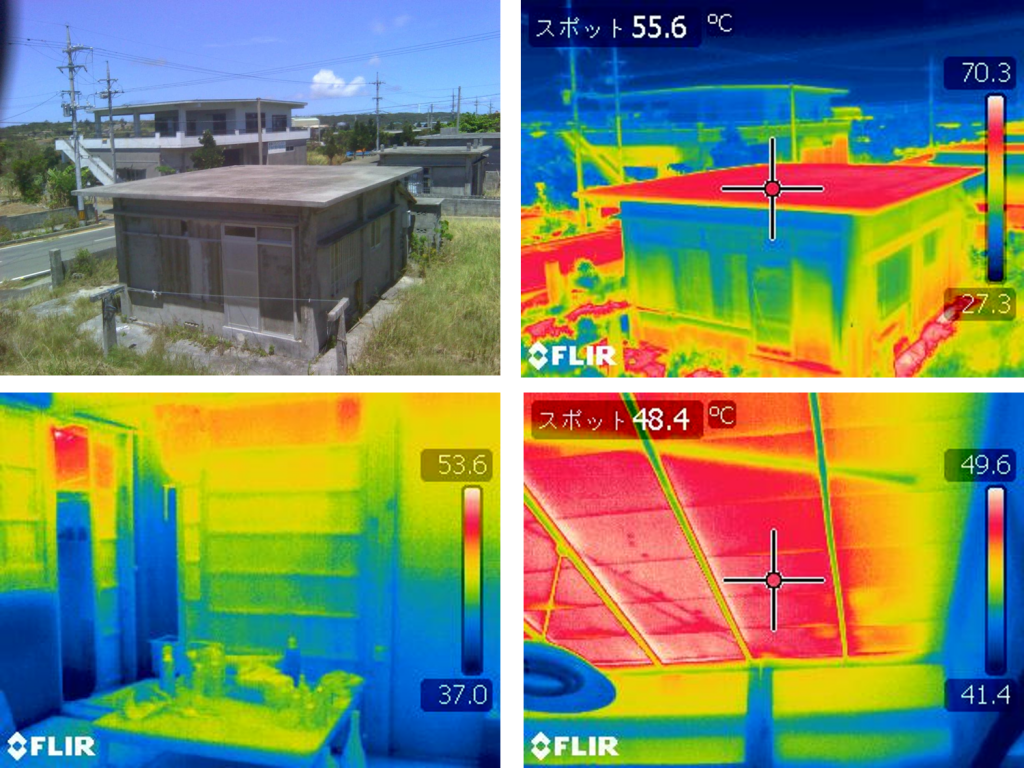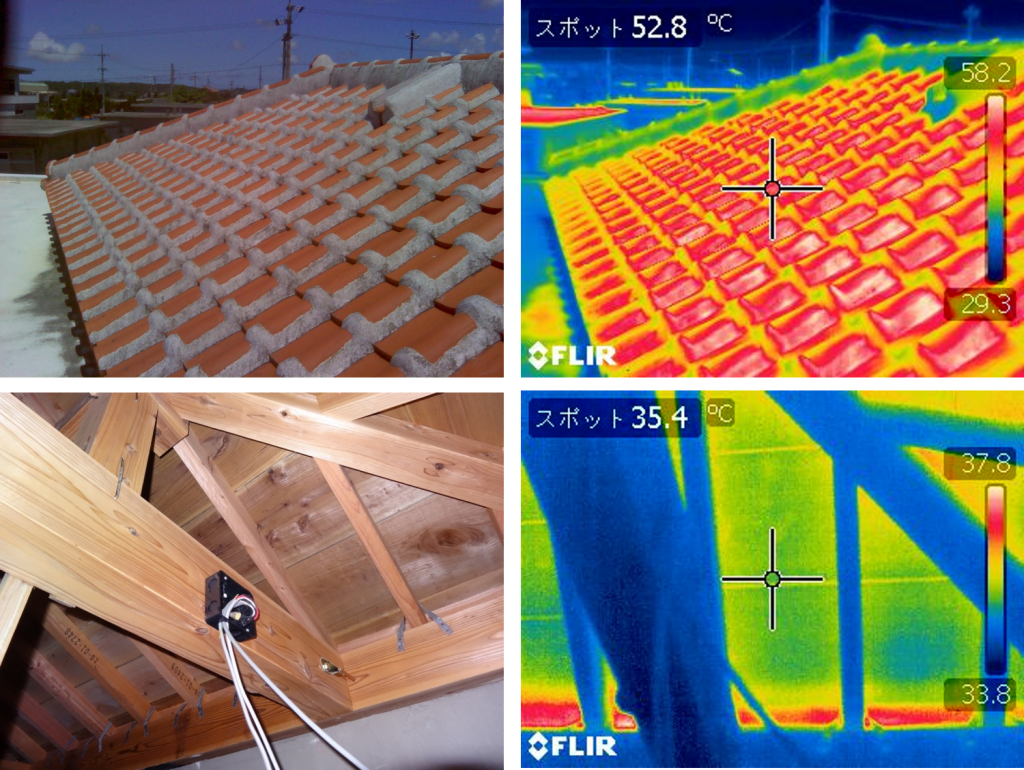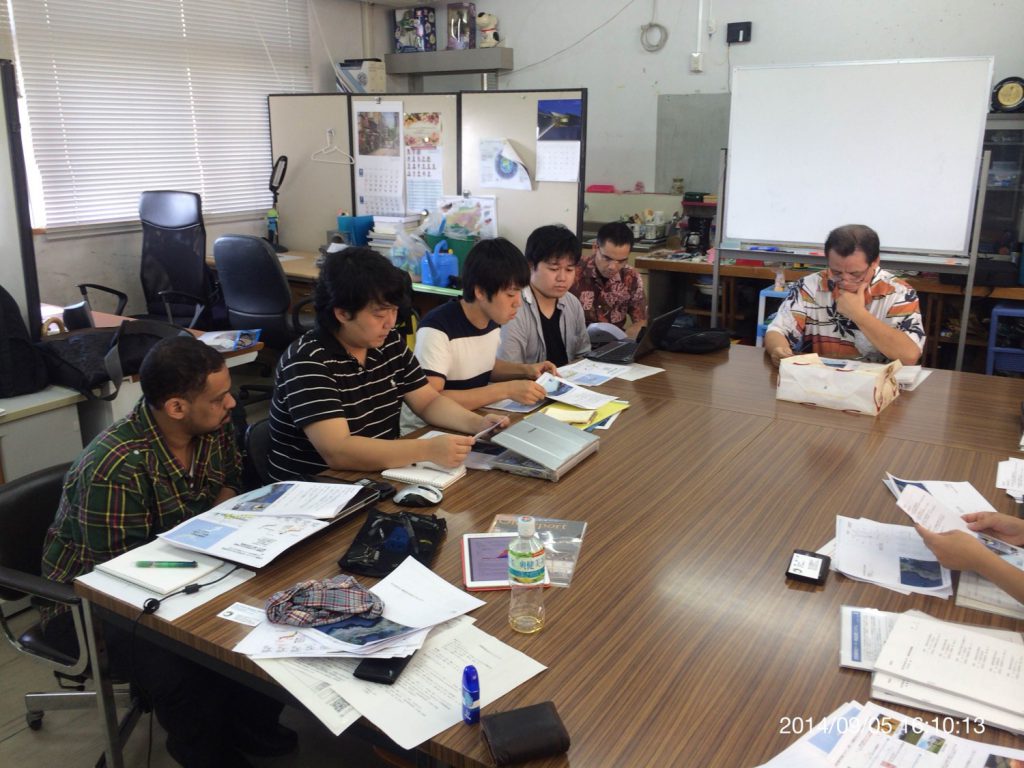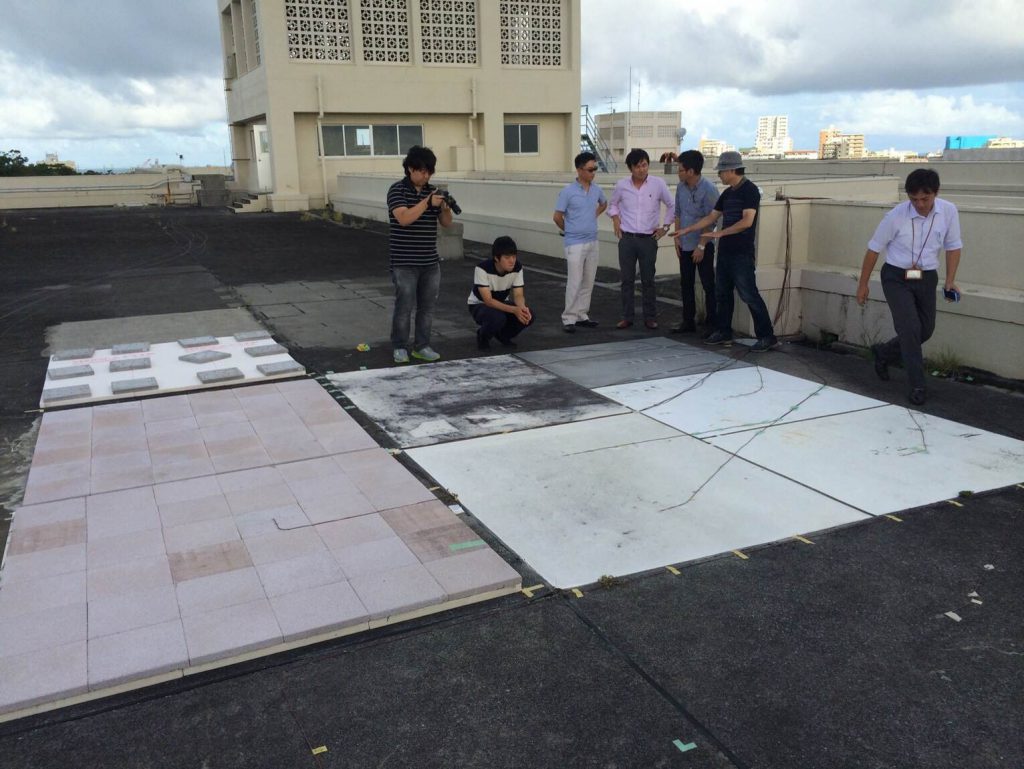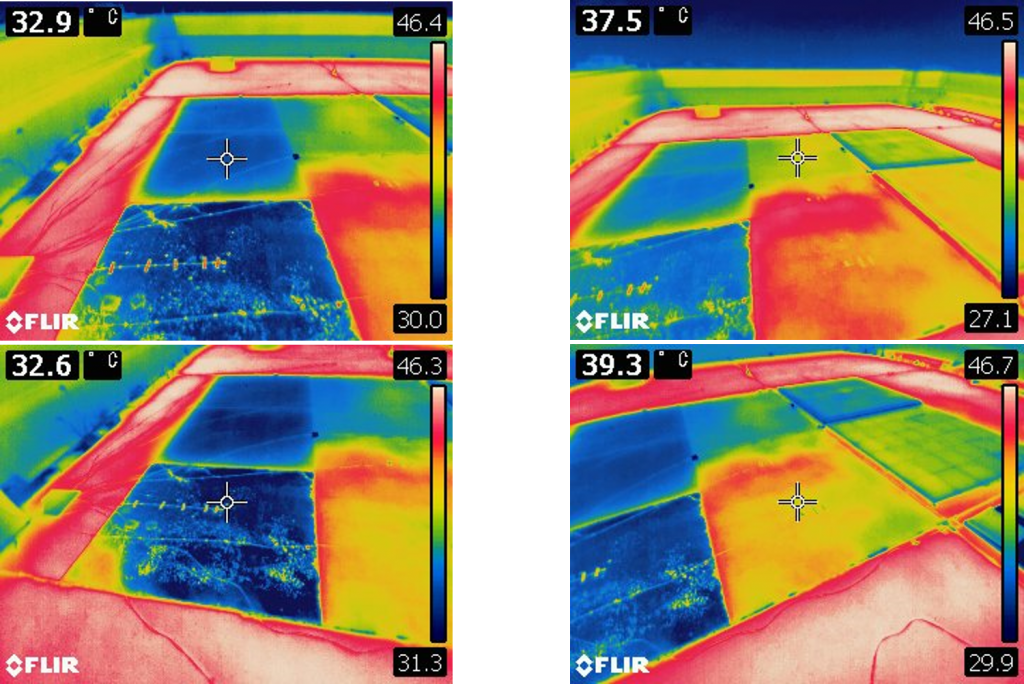In September 2015, a group of MaeLab visit to the US for two main objectives, one is to witness the Solar Decathlon competition, and secondly to survey and interview some of the UC Berkeley scholars about the early Stage optimization tools. This post shares the Solar Decathlon visit experiences. The solar decathlon is An award competition for US student teams to build an energy efficient homes. In 2015 competition, there were 14 universities competing, each of which is designed for its home climate, and targeting their selected client, and the award went to STEVENS INSTITUTE OF TECHNOLOGY. We have interviewed the people in charge, entered and surveyed with basic environmental tools and all the 14 projects, please enjoy the photo tour below…
- Using Aluminium Composite Material ACM that are hand foldable to customize and replace the exterior panels
- Thermal photos for the shading panel and for the internal environment
- Daylight and Temperature measurements at Clemson project
- The external louver shading is designed to be denser in sunny zones
- The CA Polytechnic project that integrated the Bifacial photovoltaic panels
- Thermal photos for the internal env and for The Bifacial PV panels
- UC Davis
- The use of evaporative and radiative cooling to cool the sprinkled water during night
- In UC Davis system, the chilled water is circulated under the floor using PVC piping coil (a radiant floor cooling)
- Inspecting the Temperature and Humidity levels in UC Davis
- Several Investigations in UC Davis
- Stevens Institute of Technology “SURE house” – The winners
- Stevens project applied the very tight and highly sealed passive house design strategies
- Stevens “SURE House” is designed for the shore residents endangered by floods, hurricanes and blackouts.
- The envelope of the “SURE house” is meant to be waterproof up to the of height 1.5 m
- Temperature & Humidity measurements inside Steven’s SURE house
- The SURE House Internal temperature seems to be quite homogeneous
- A memorable photo at the SD gate
- Clemson University
- modular panels prepared by CNC (Computer Numerical Control) cutters and putting it together using Zipped Paneling
- CA Polytechnic State University, San Luis Obispo
- The wooden structure and the external white curtain almost have the same temperature
- the Phase Changing Material (PCM) of coconut oil
(introduction will be added soon)

